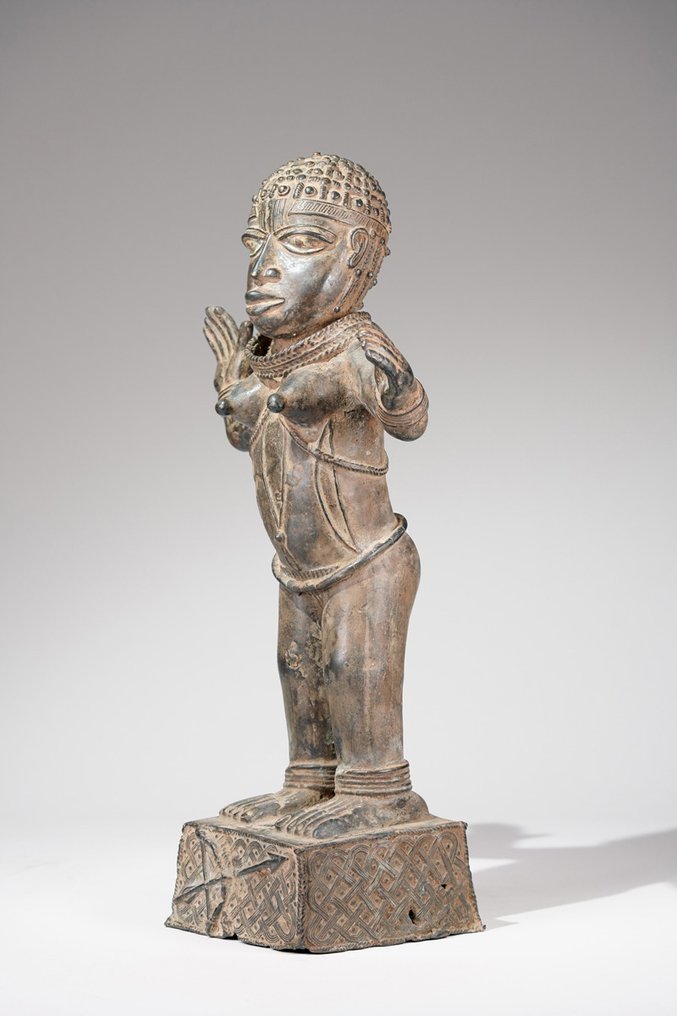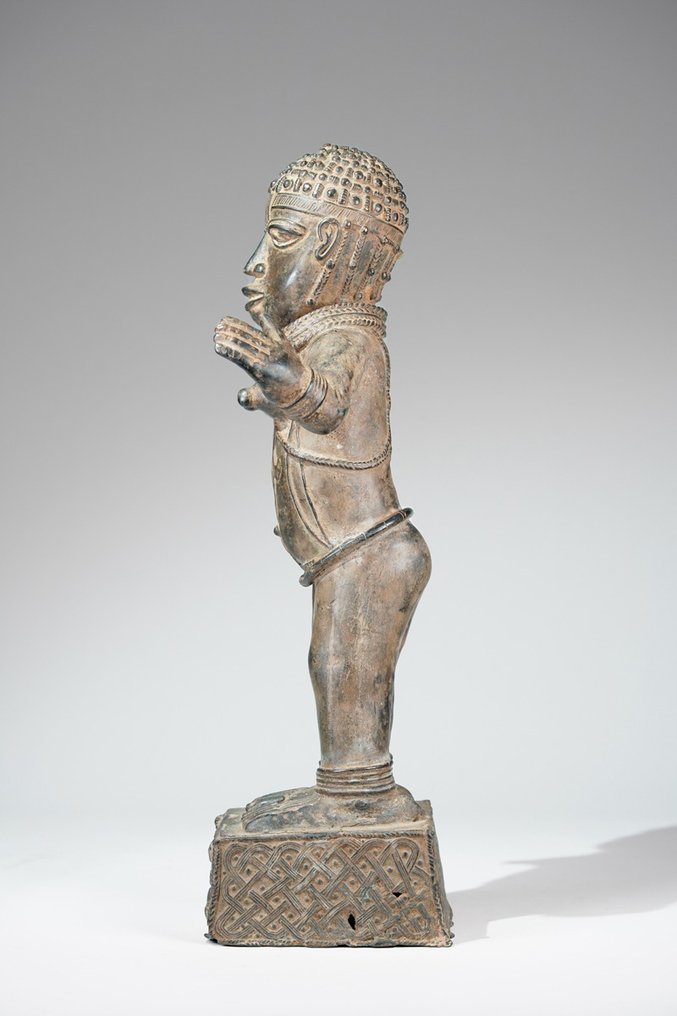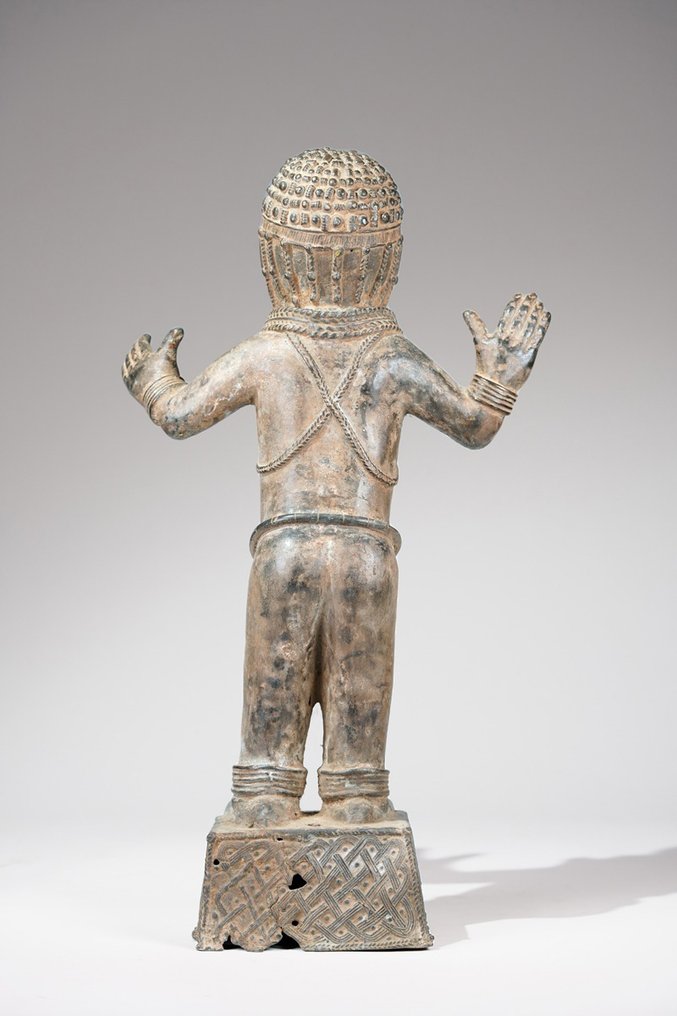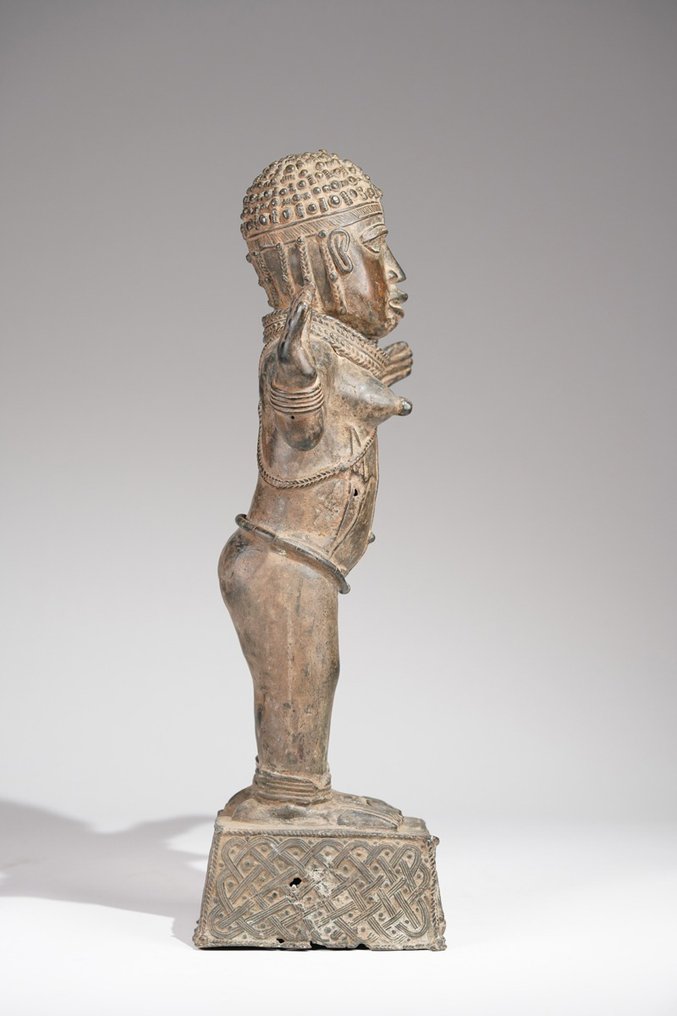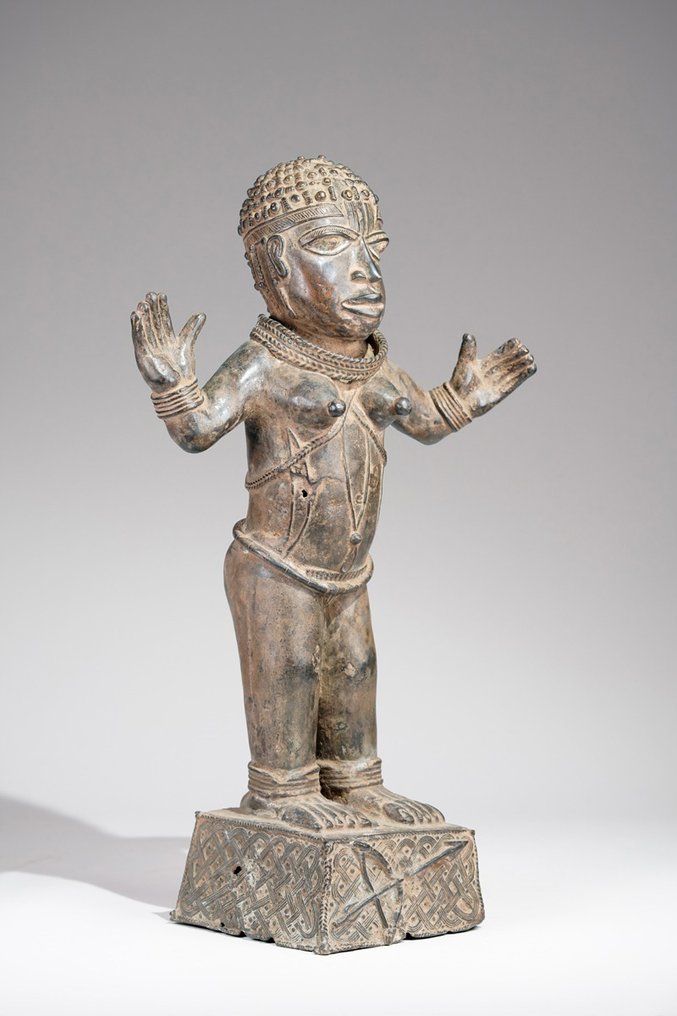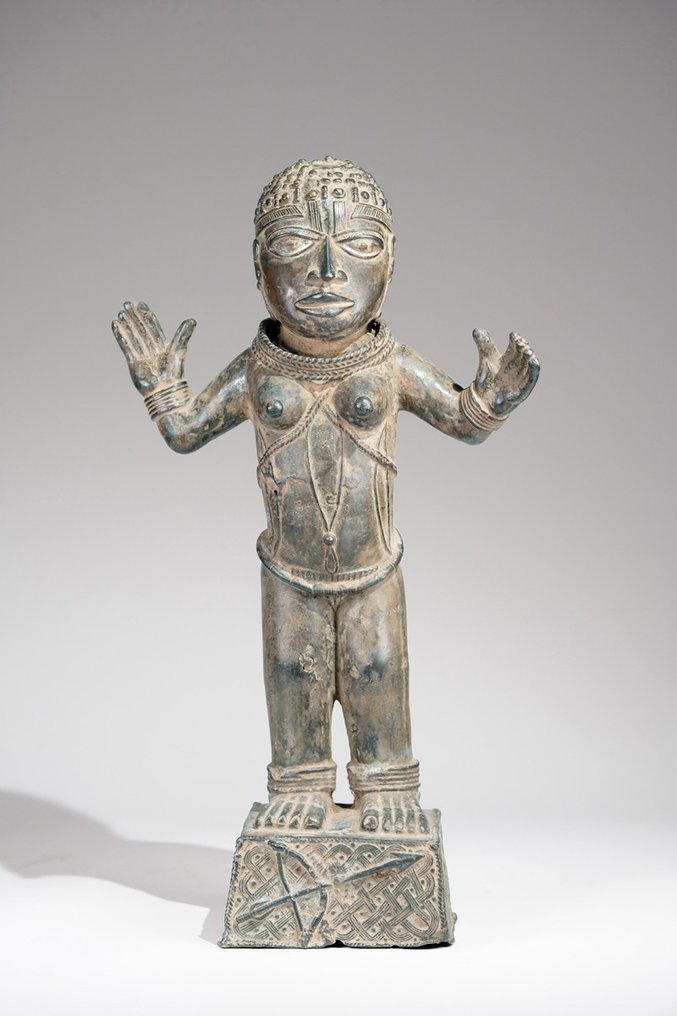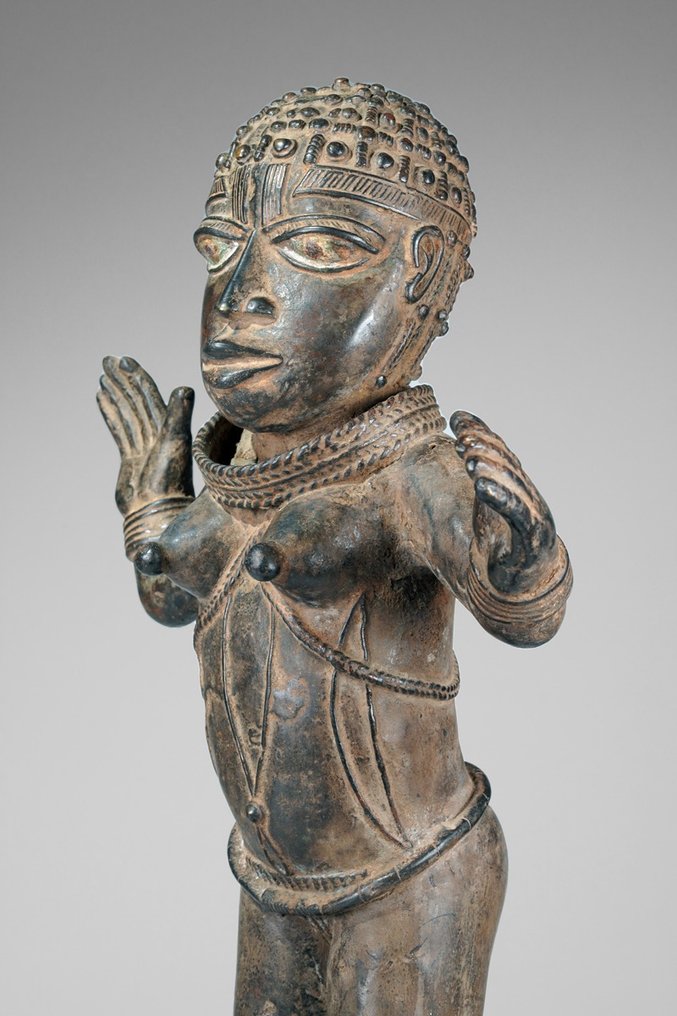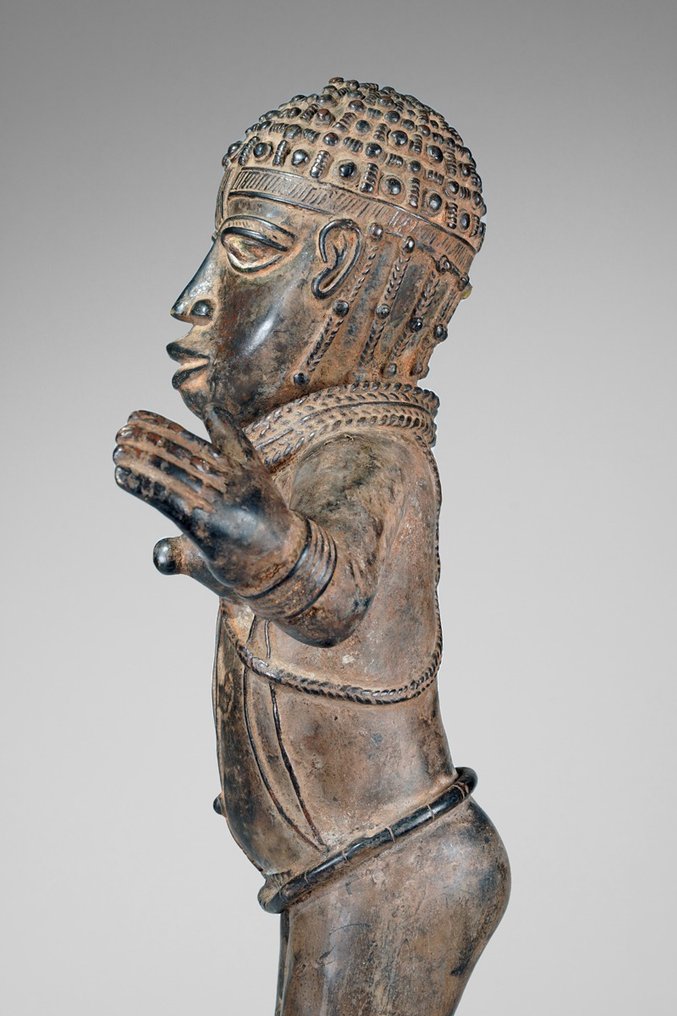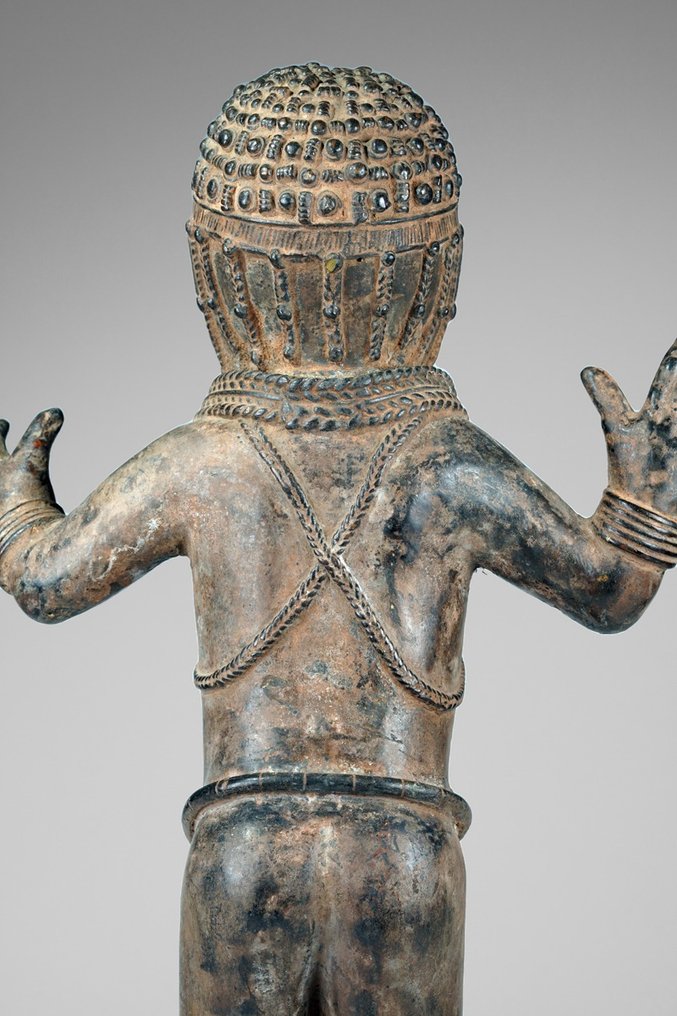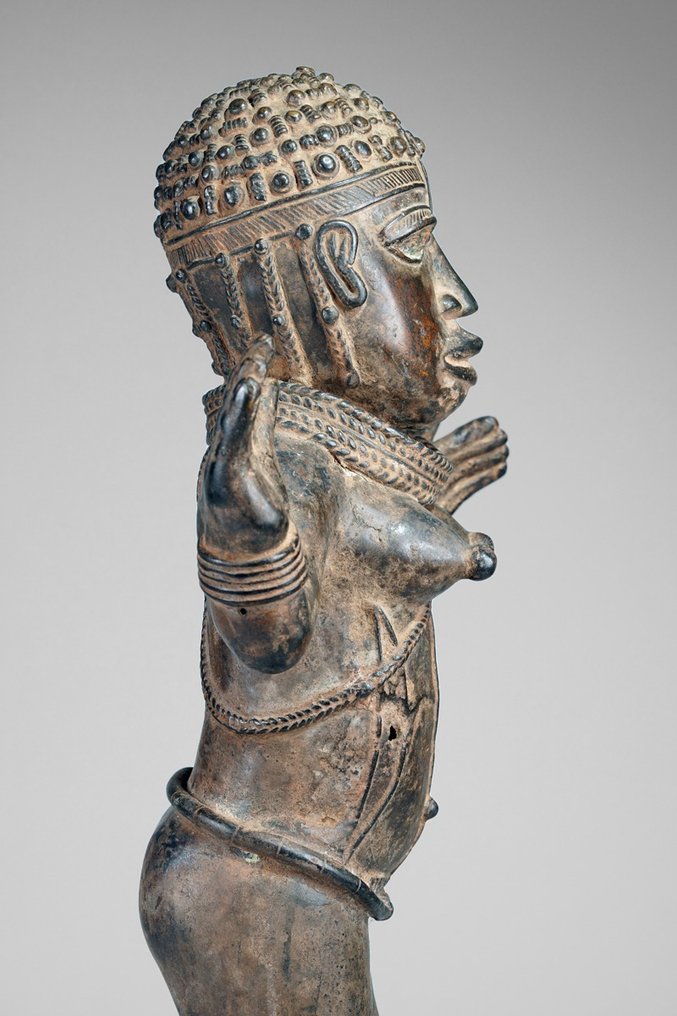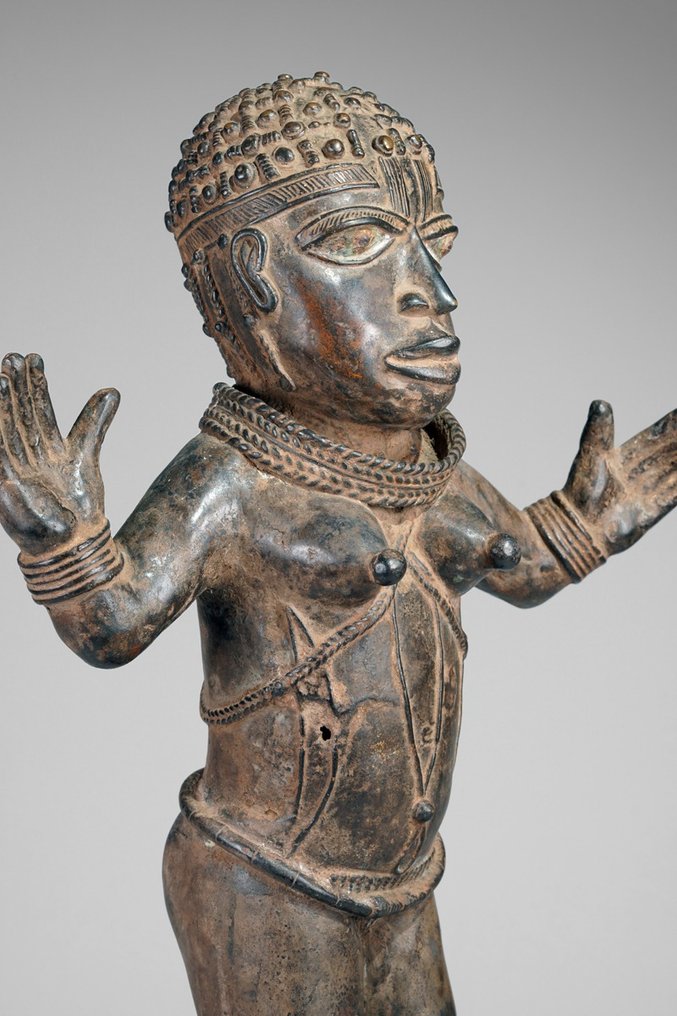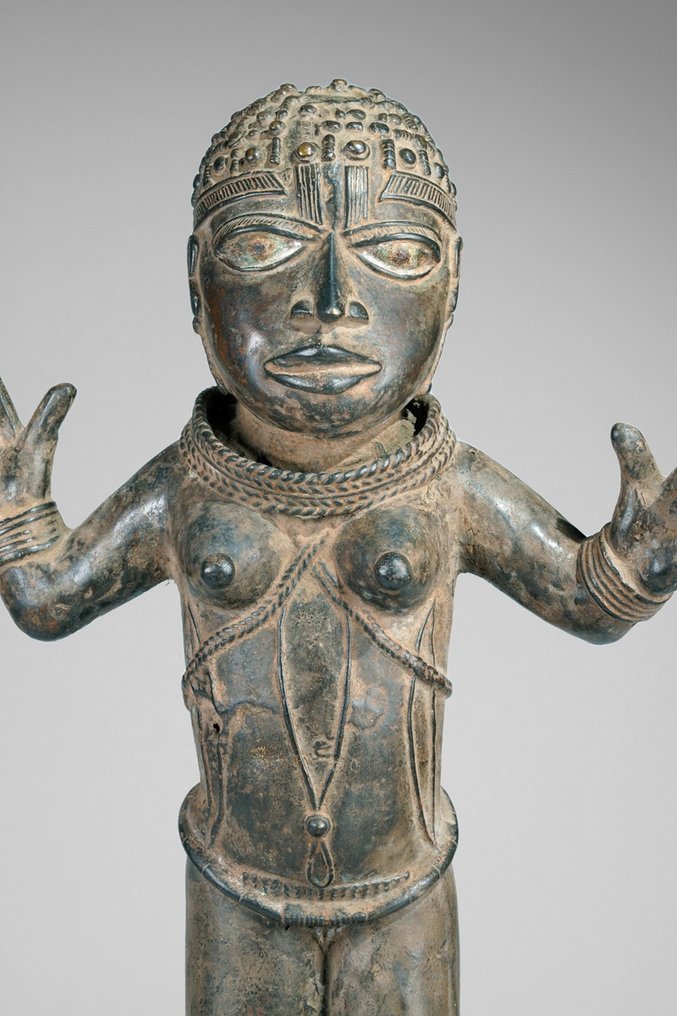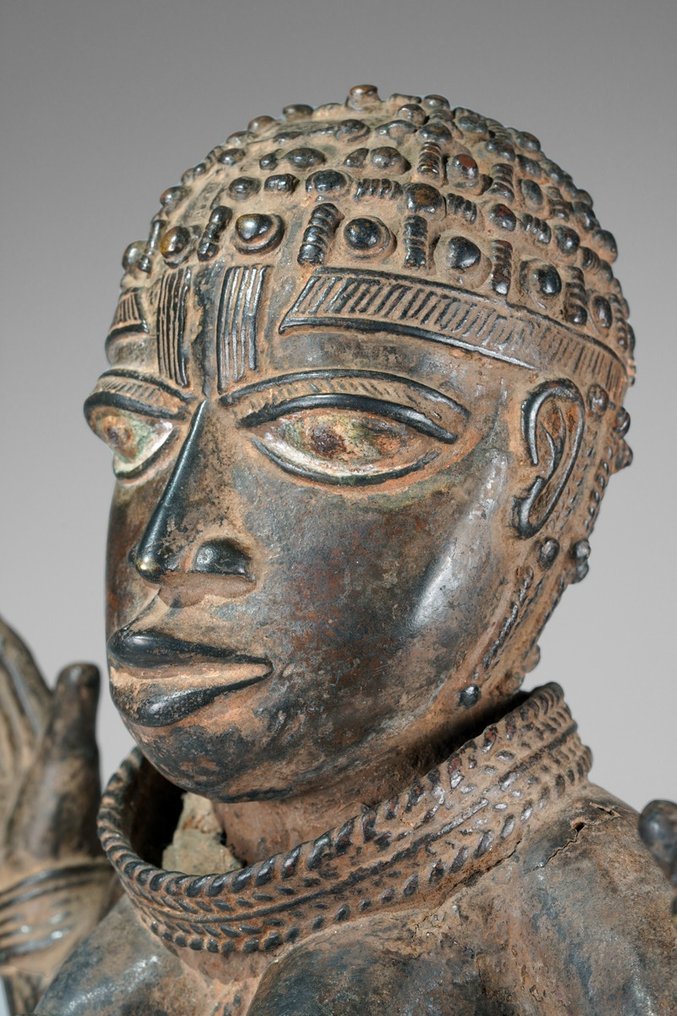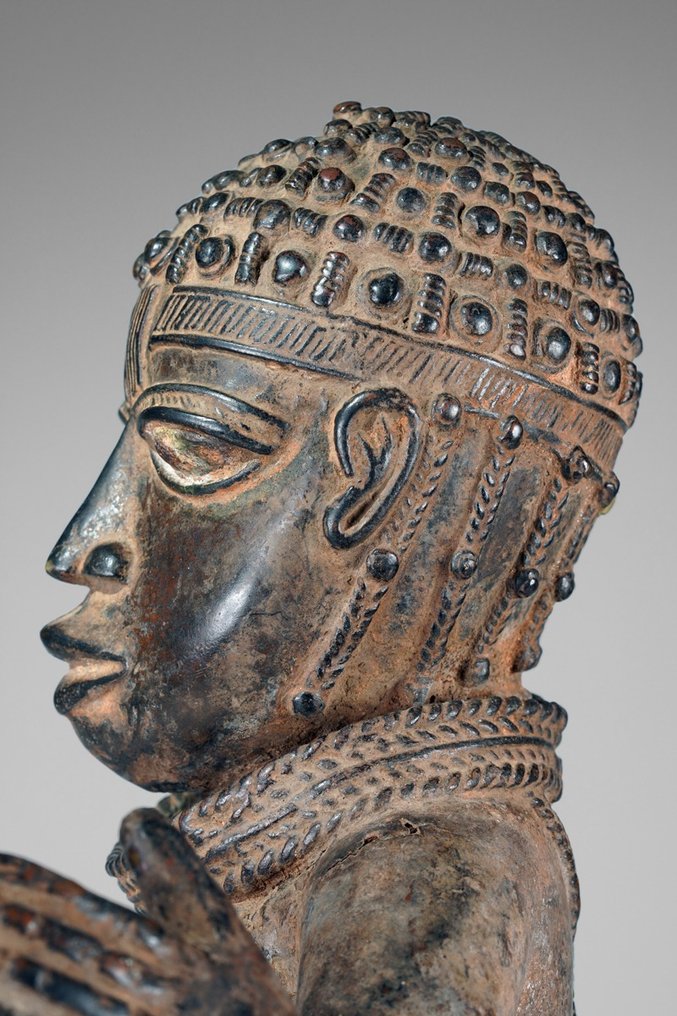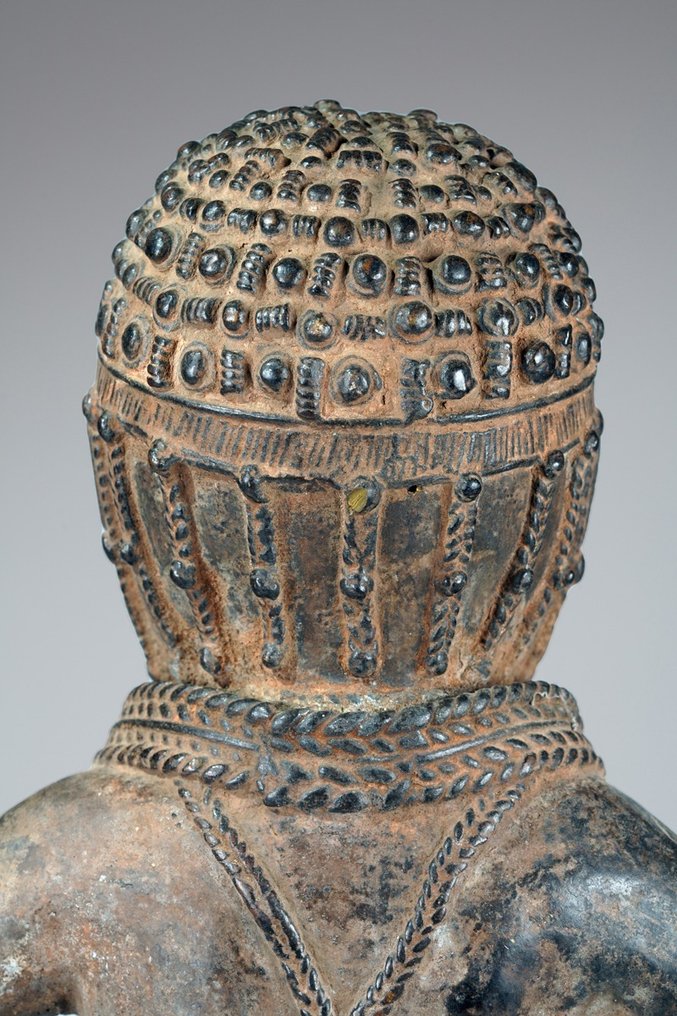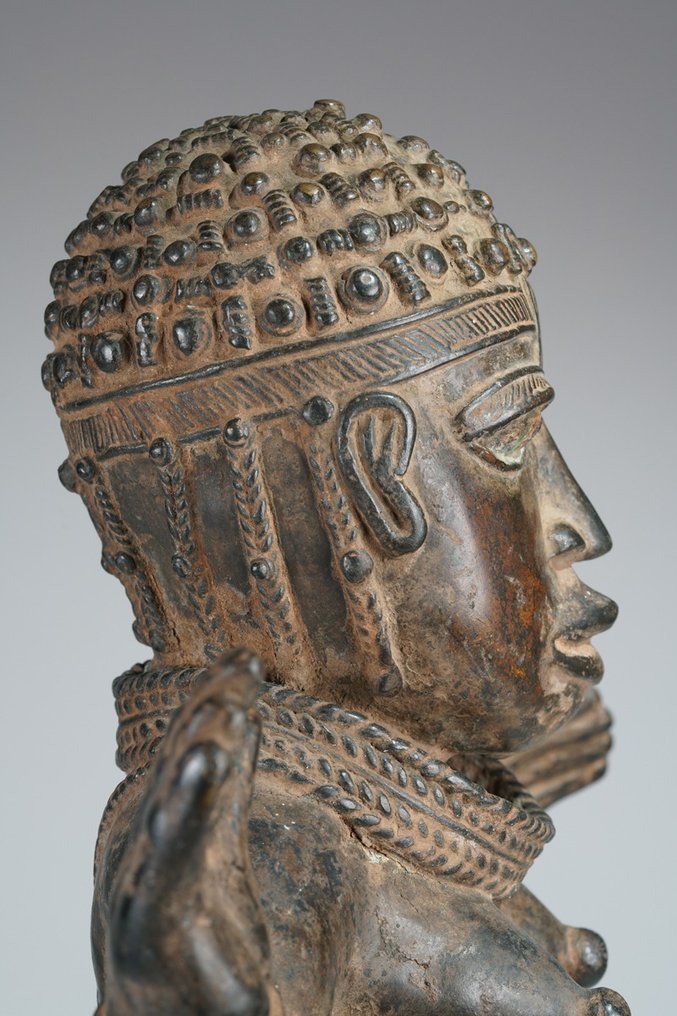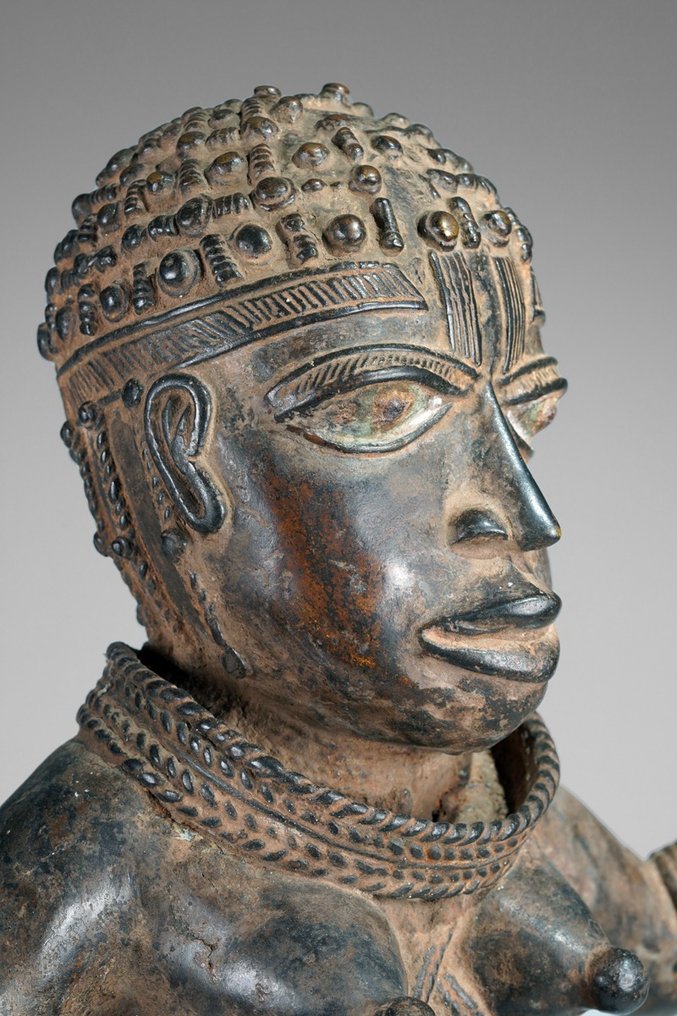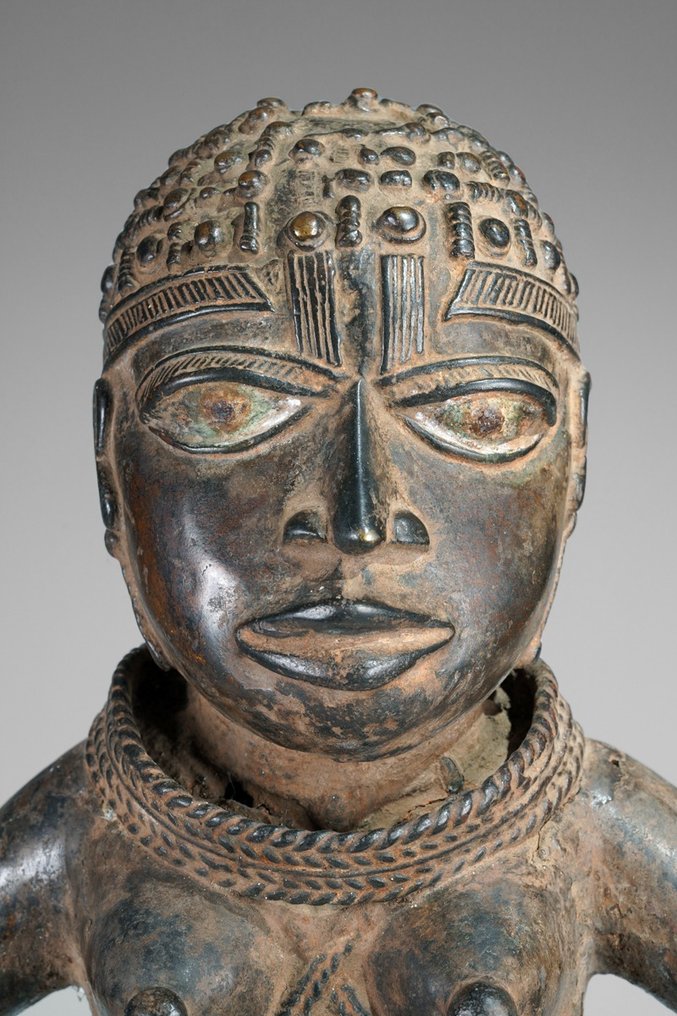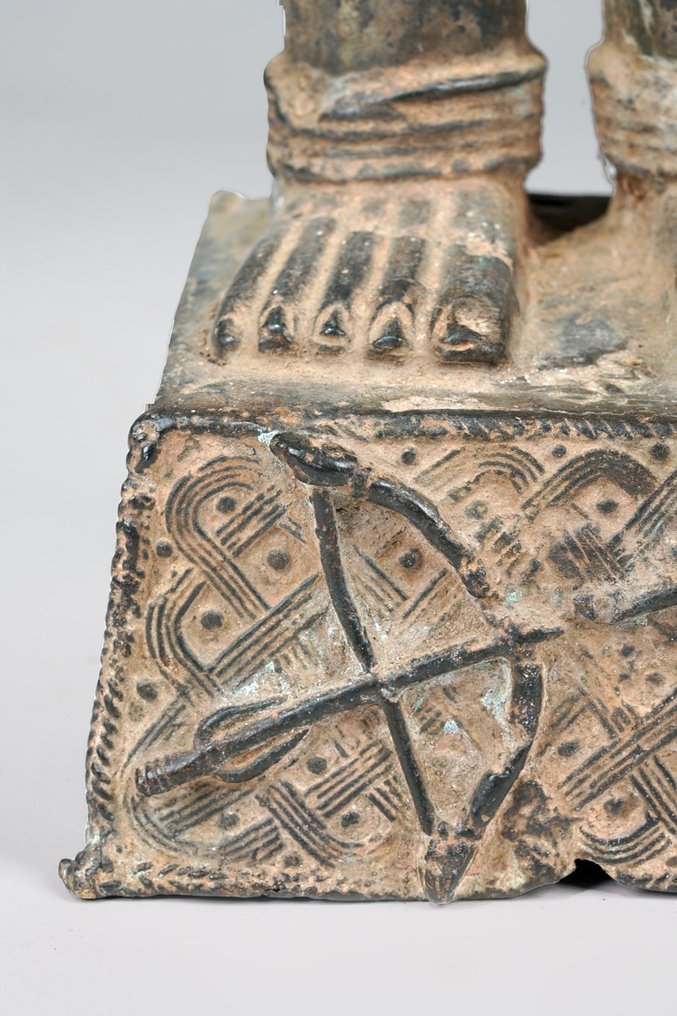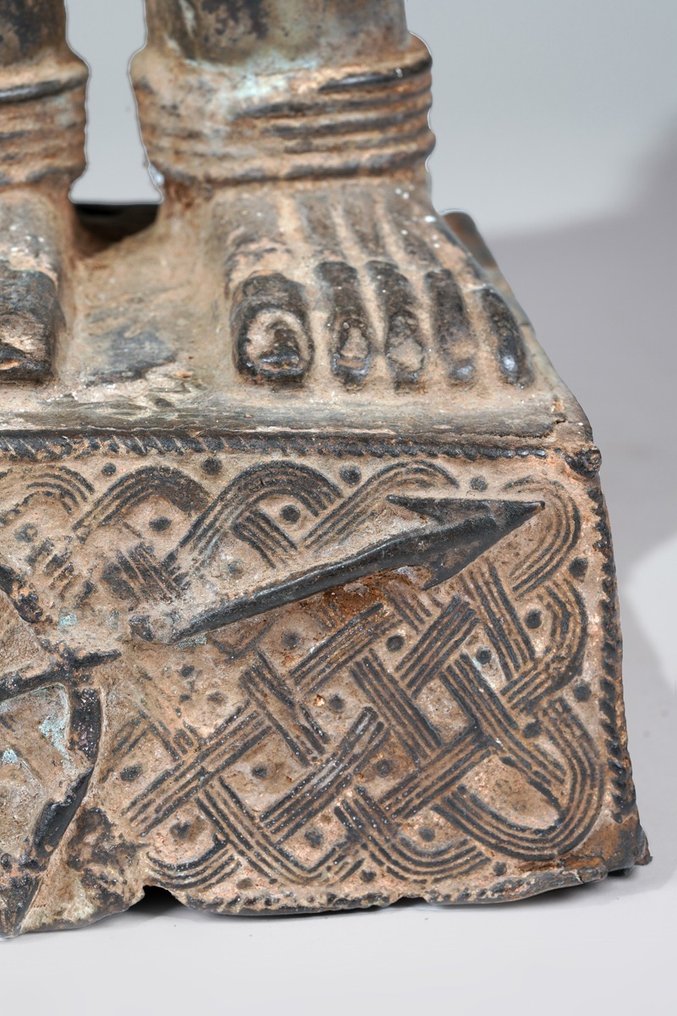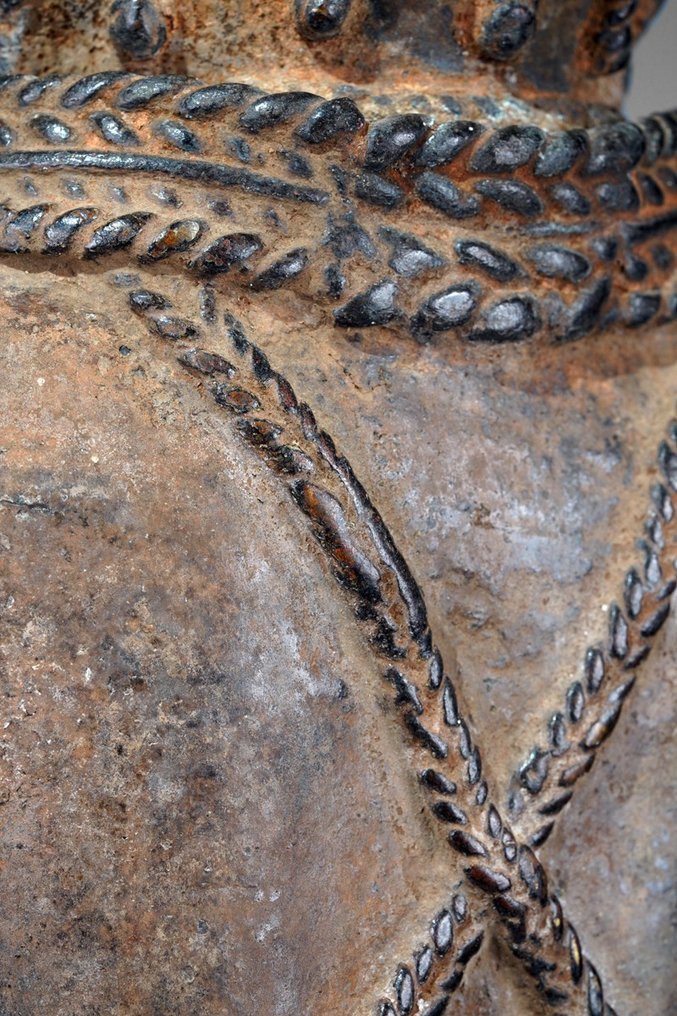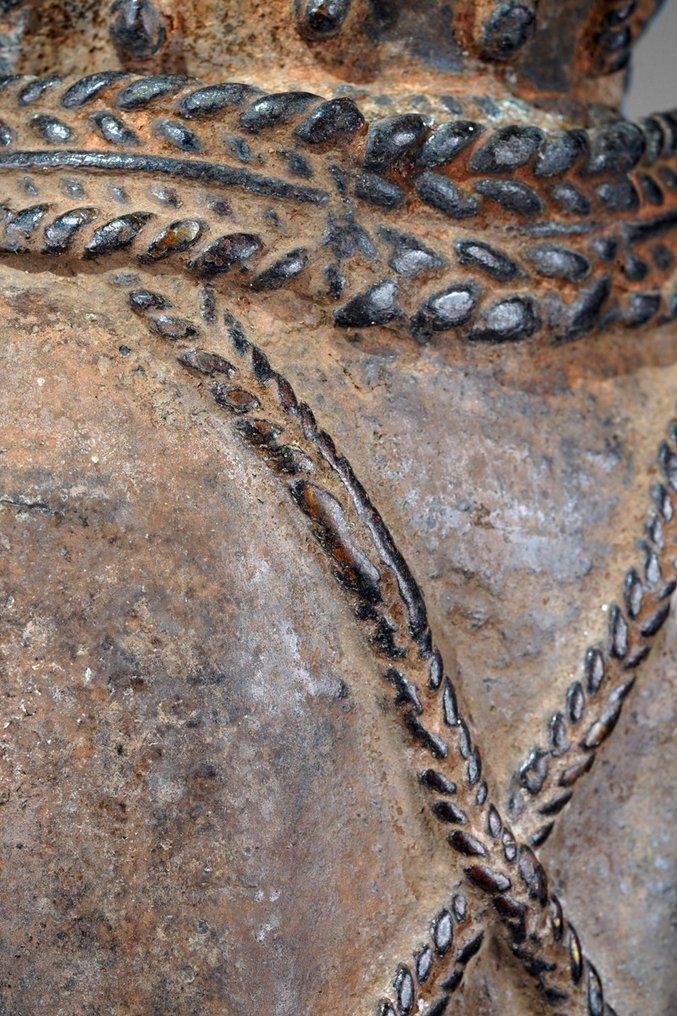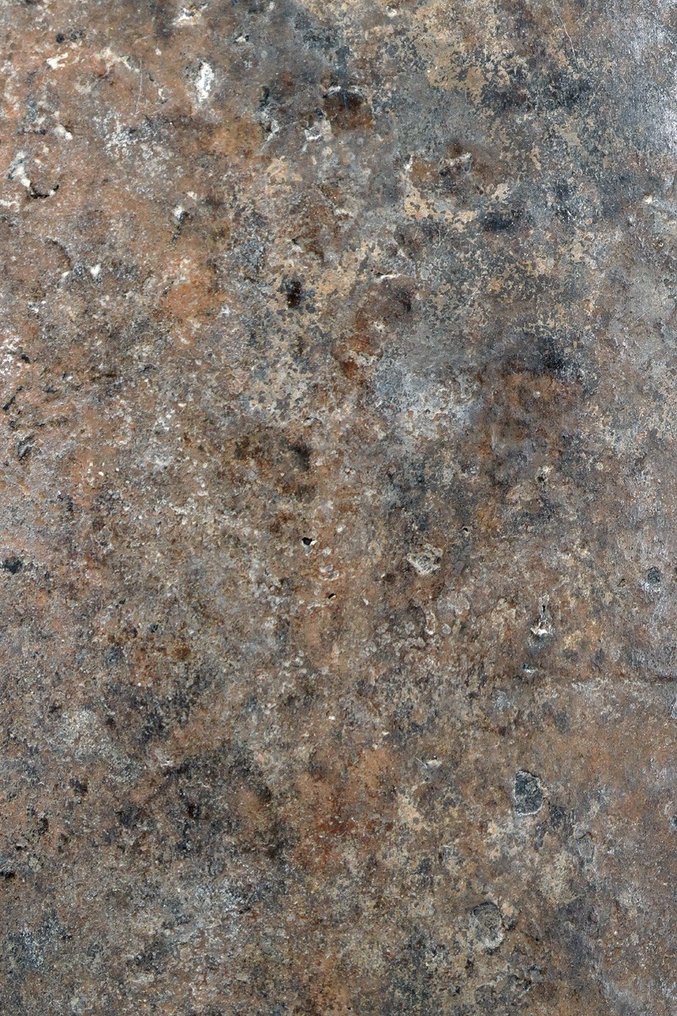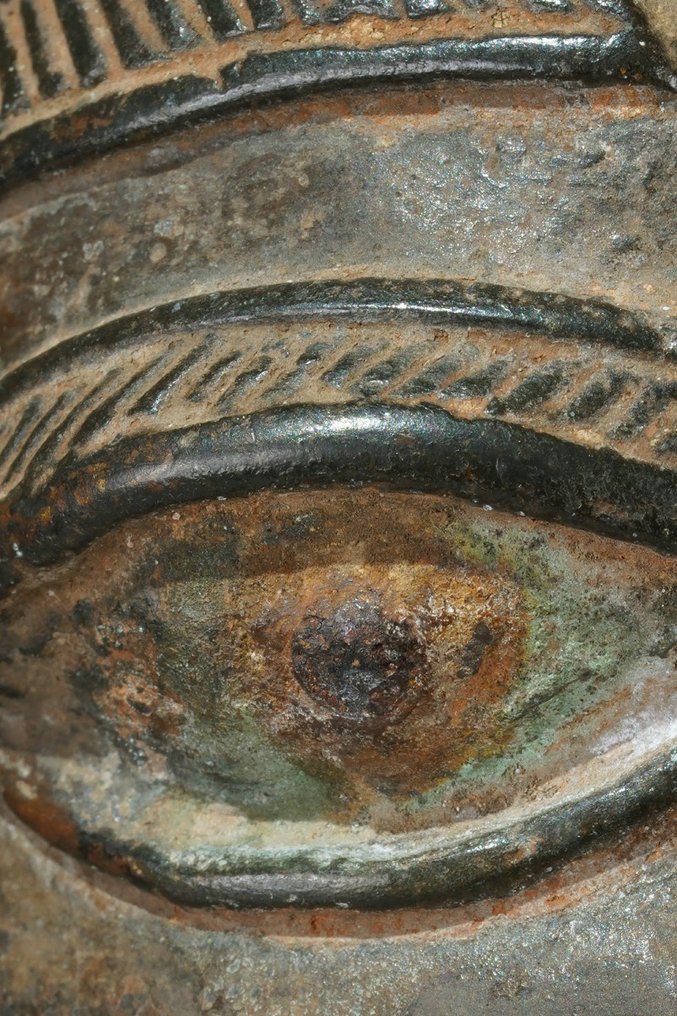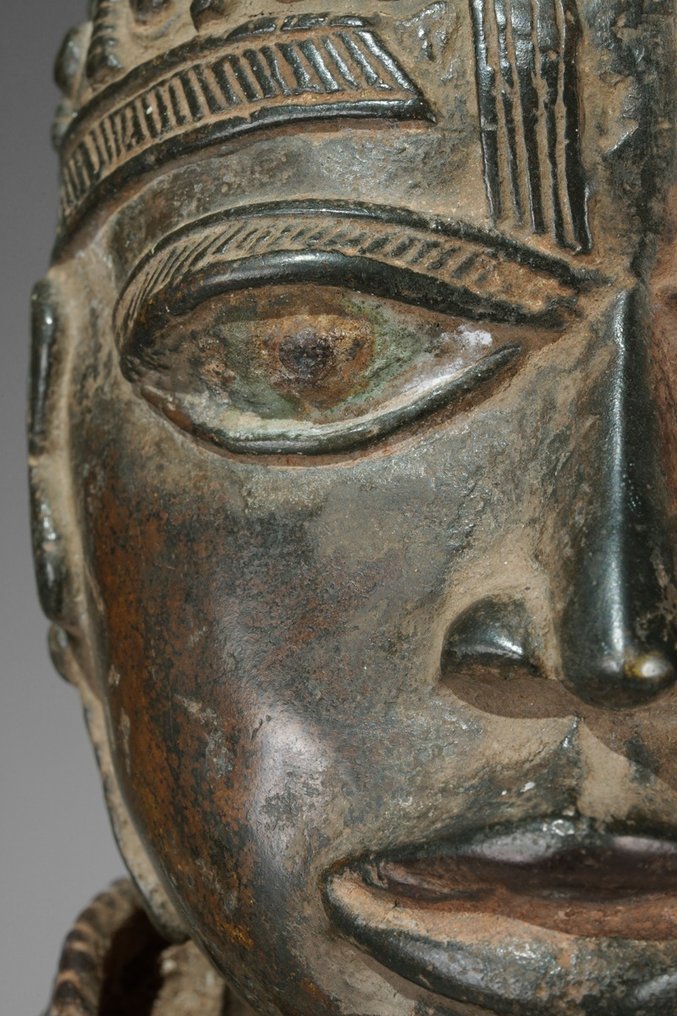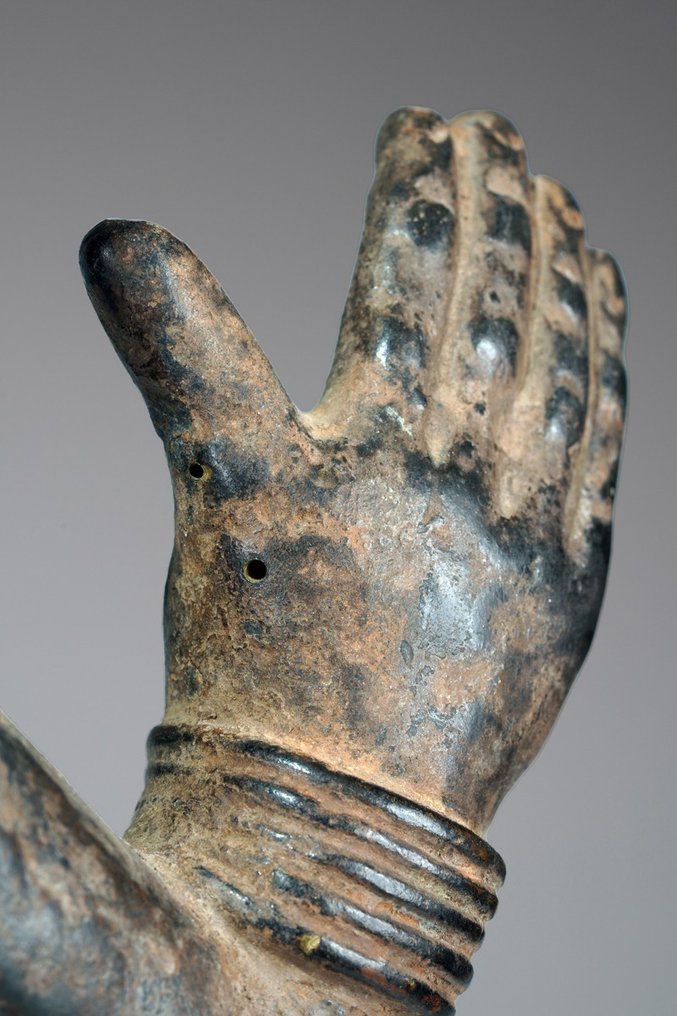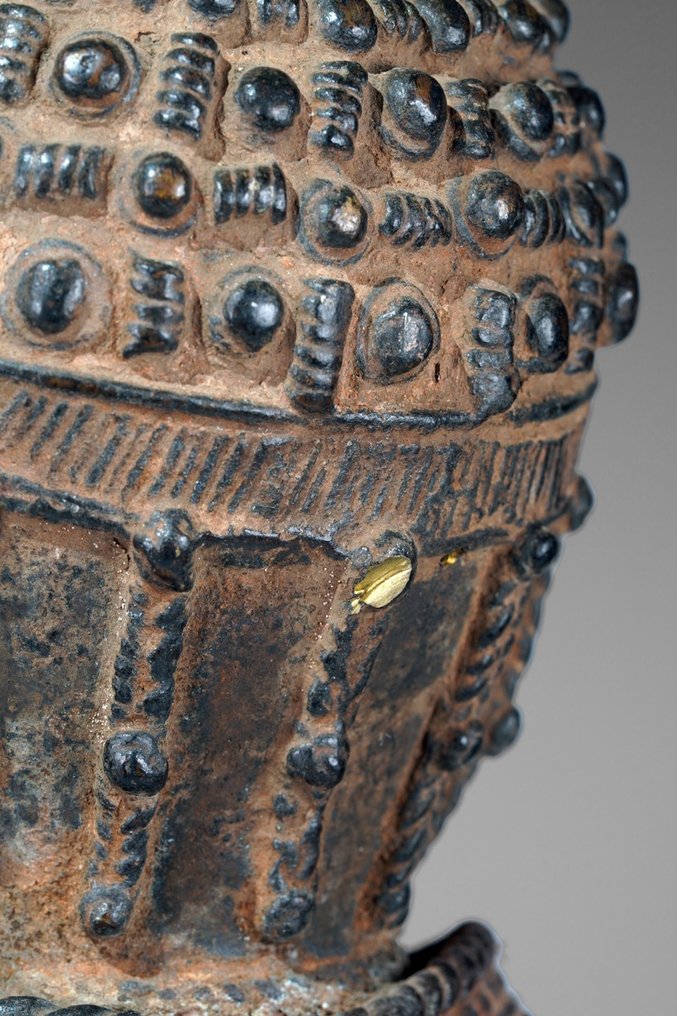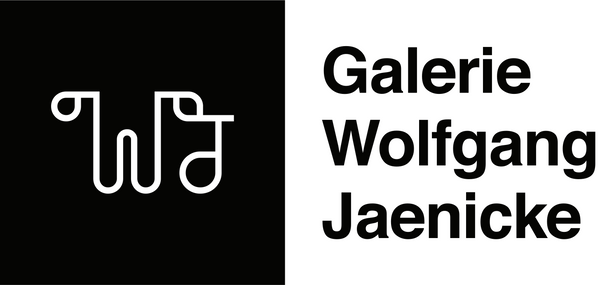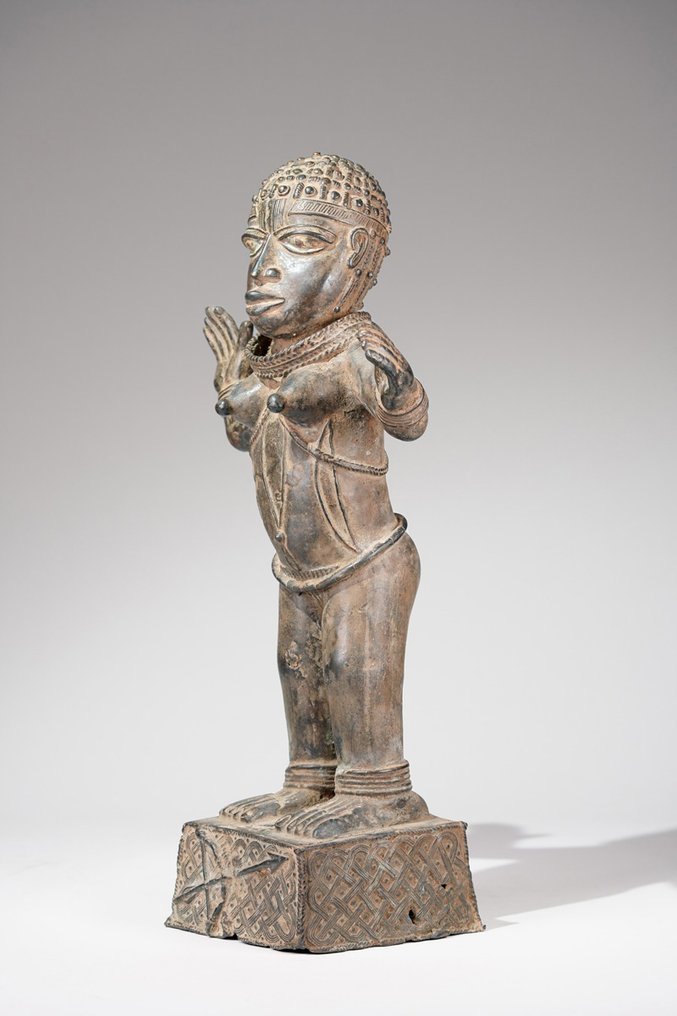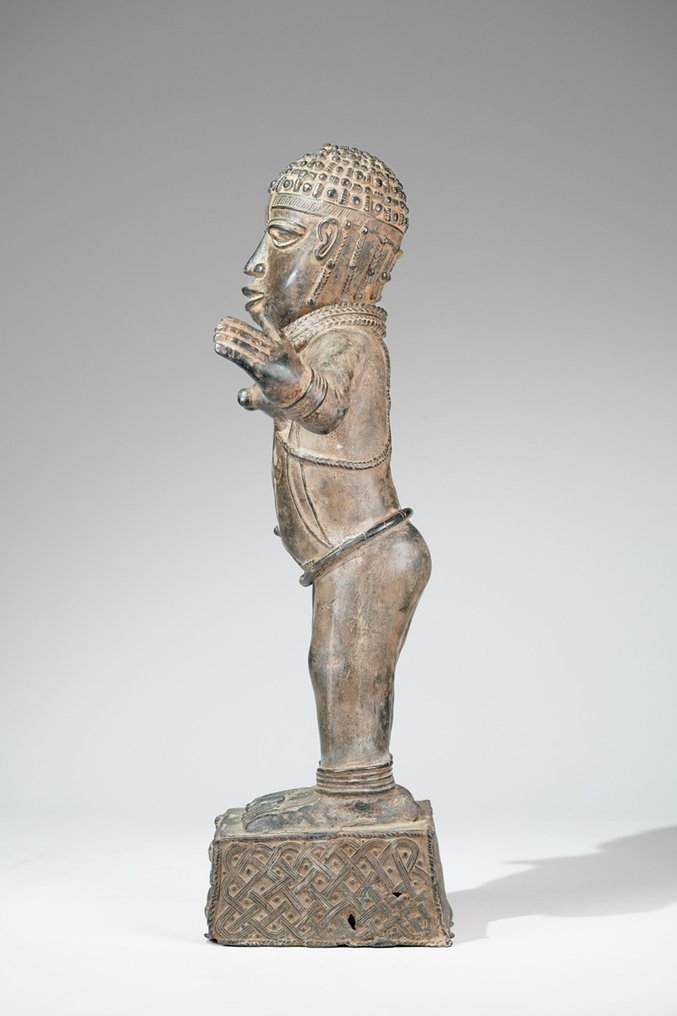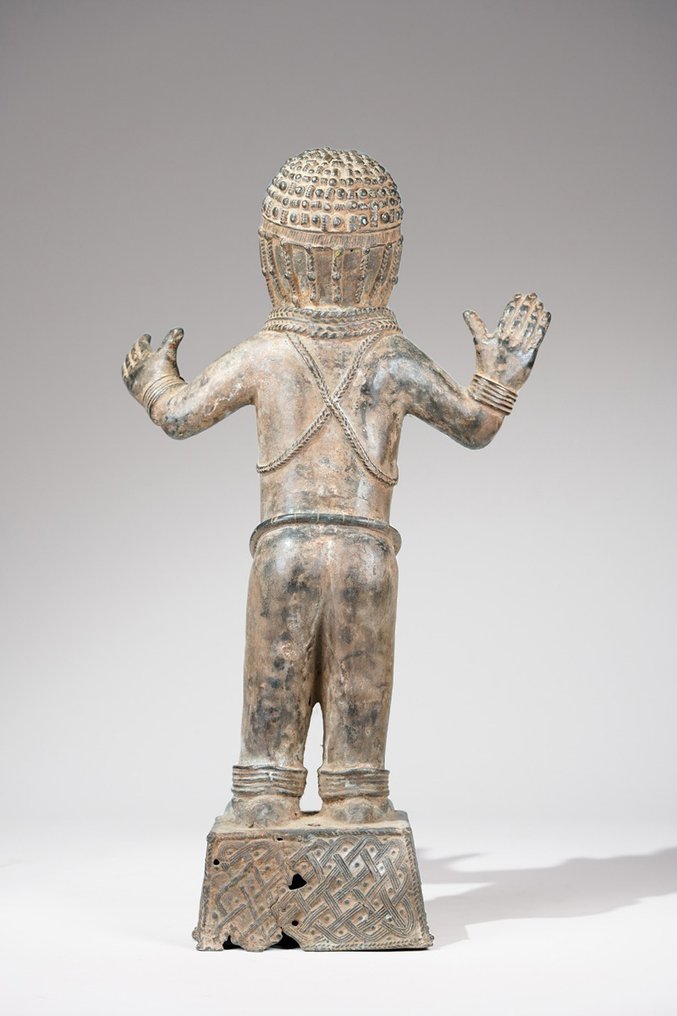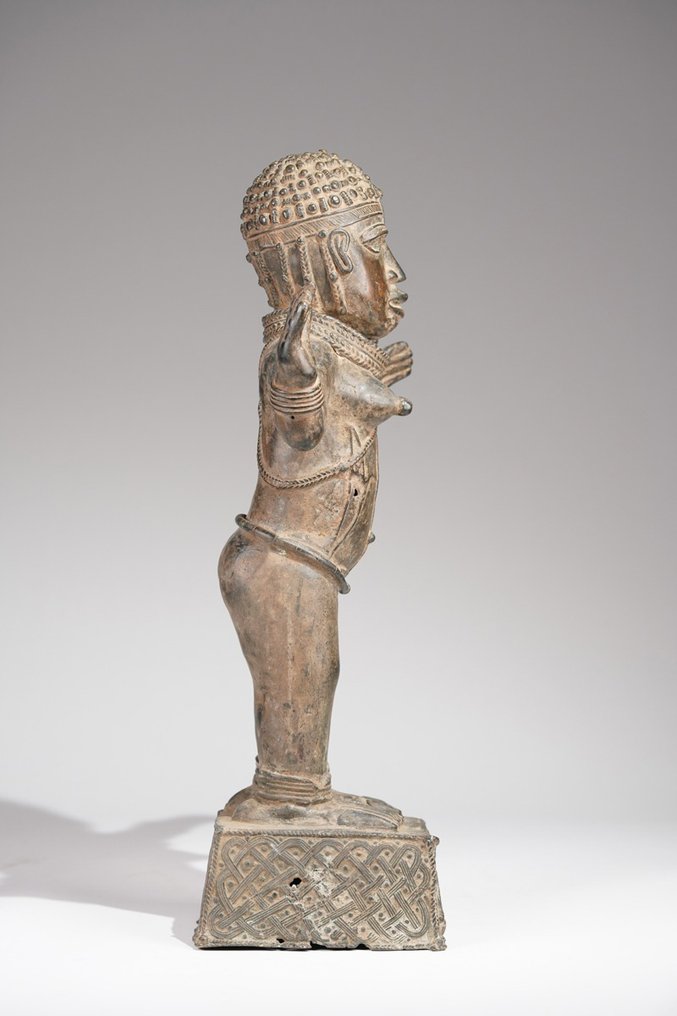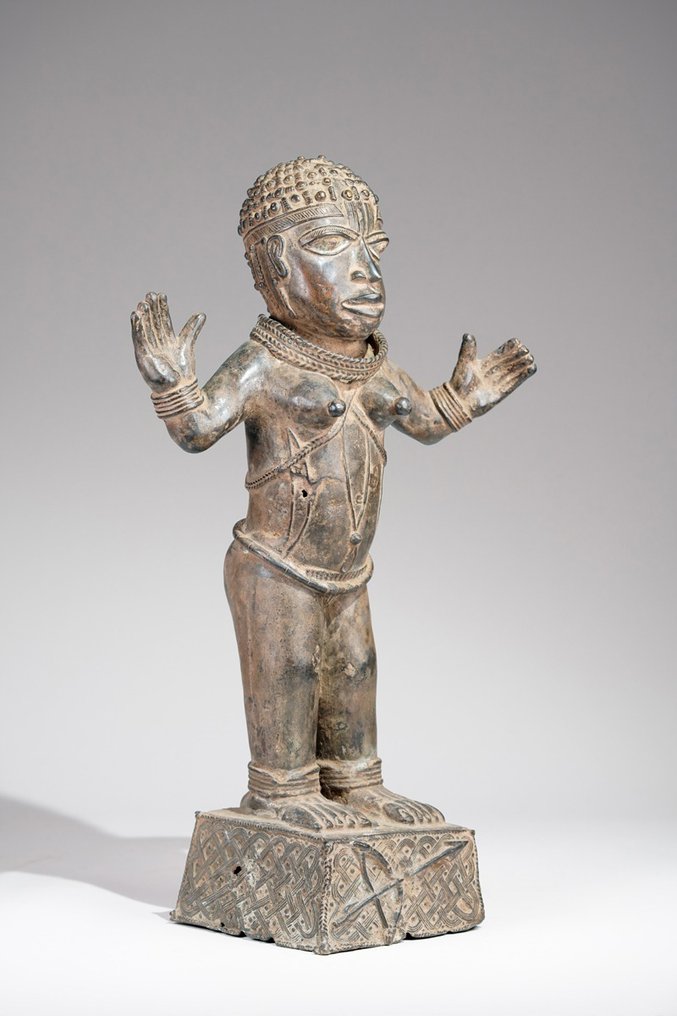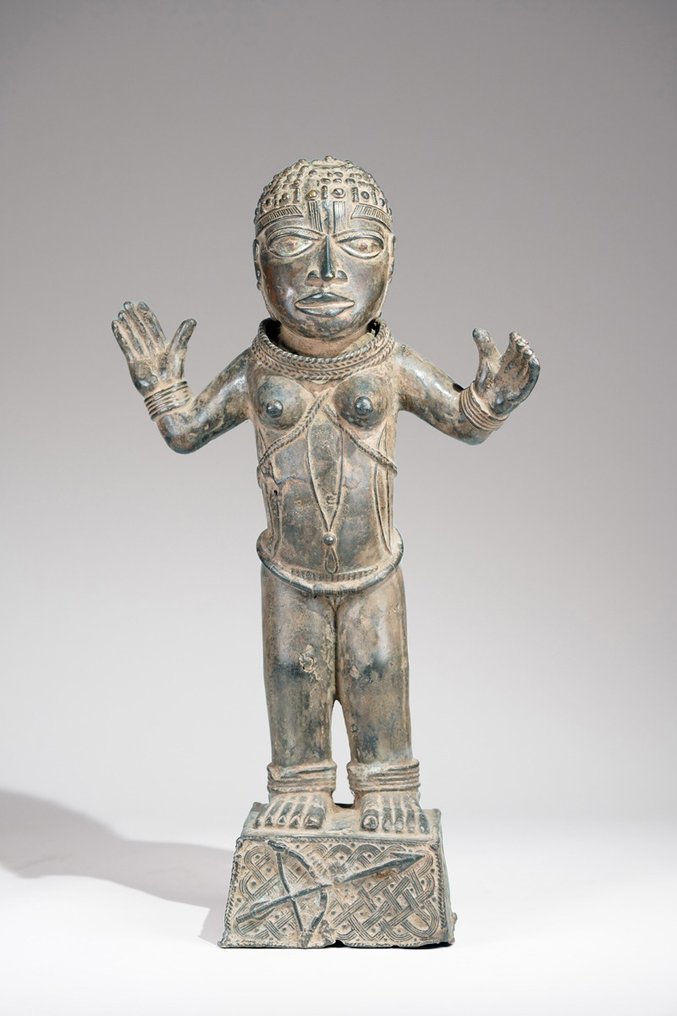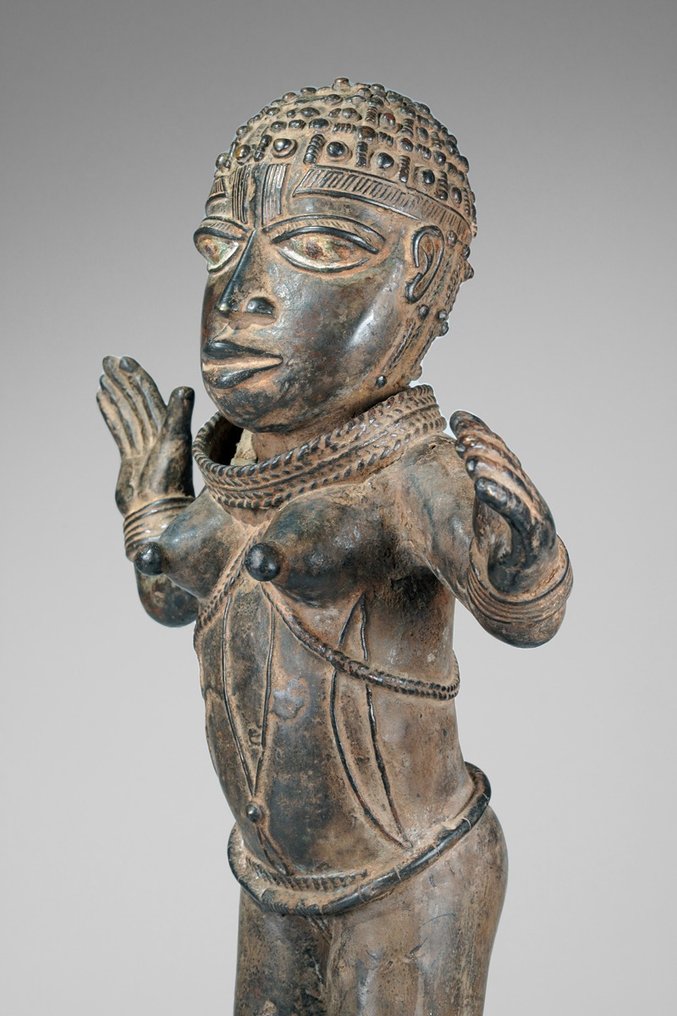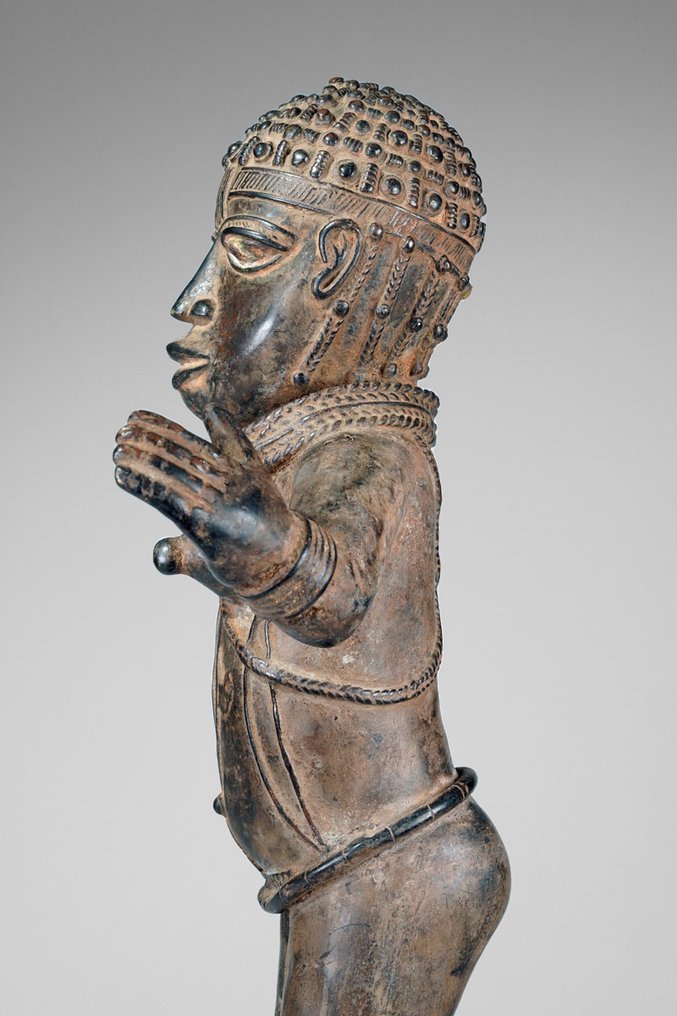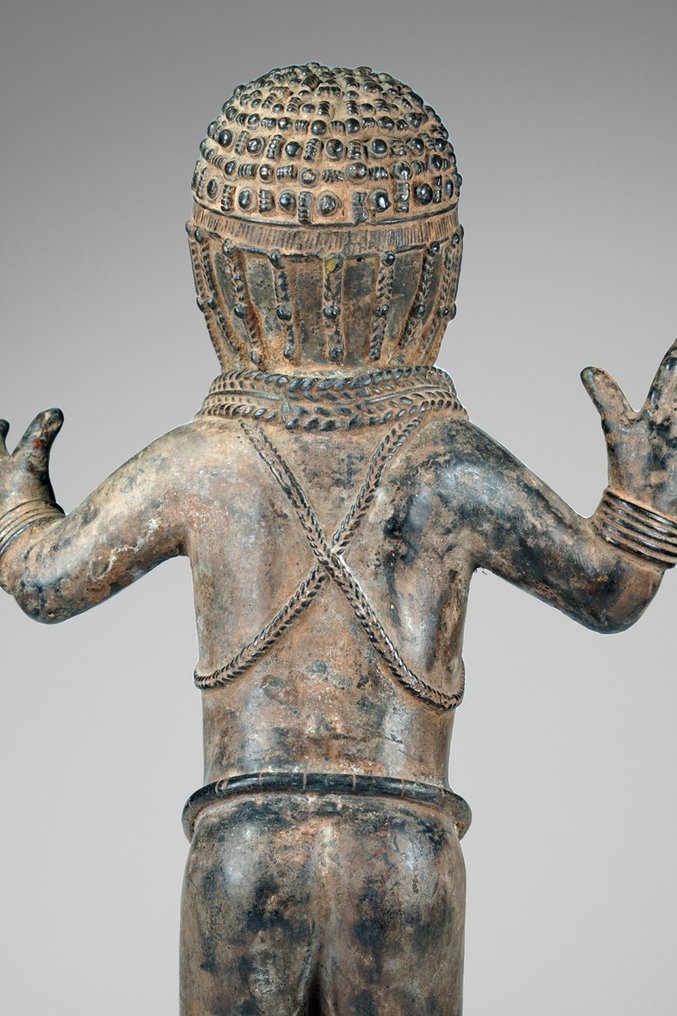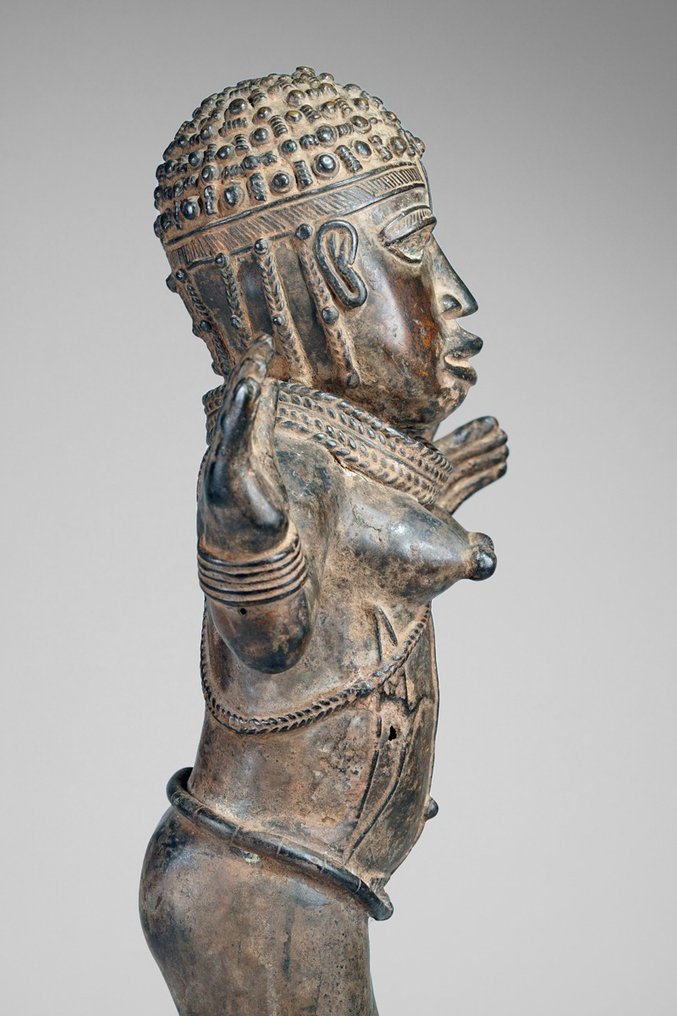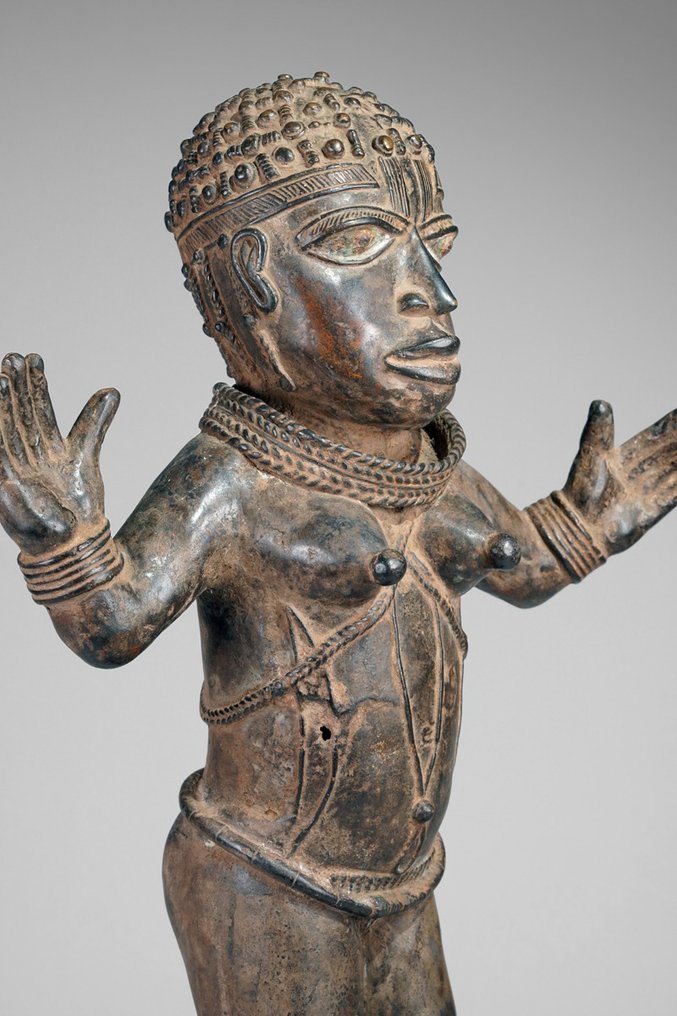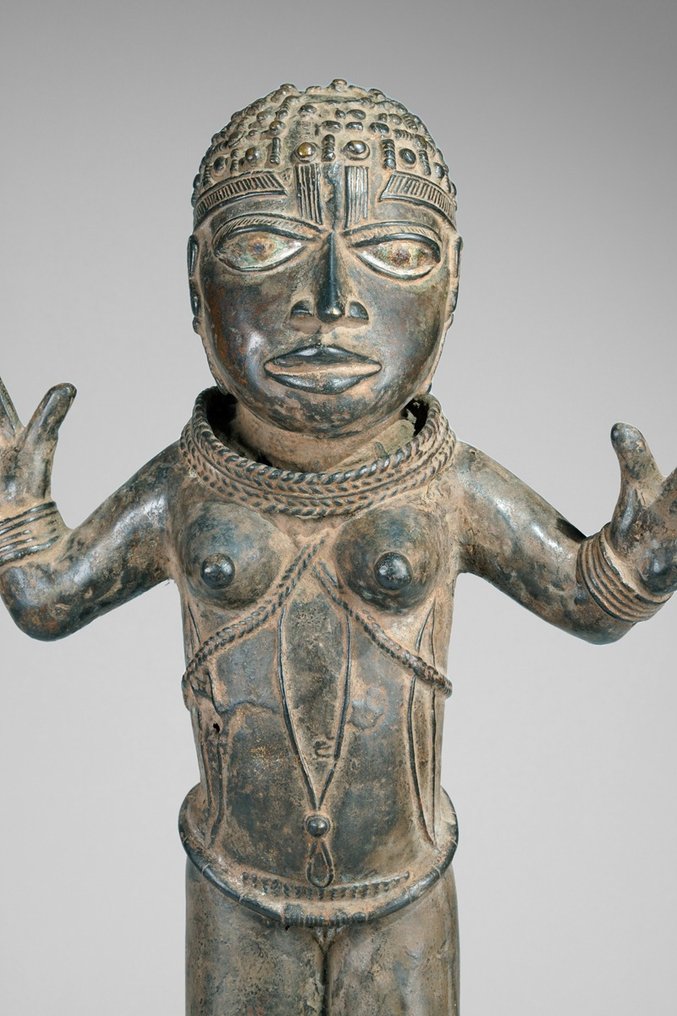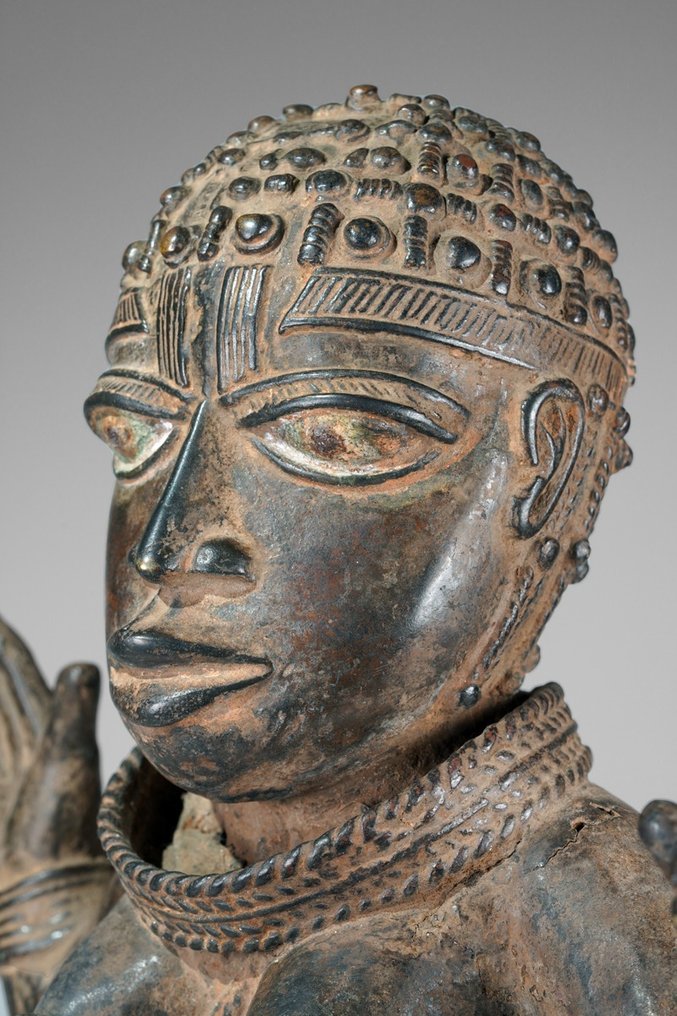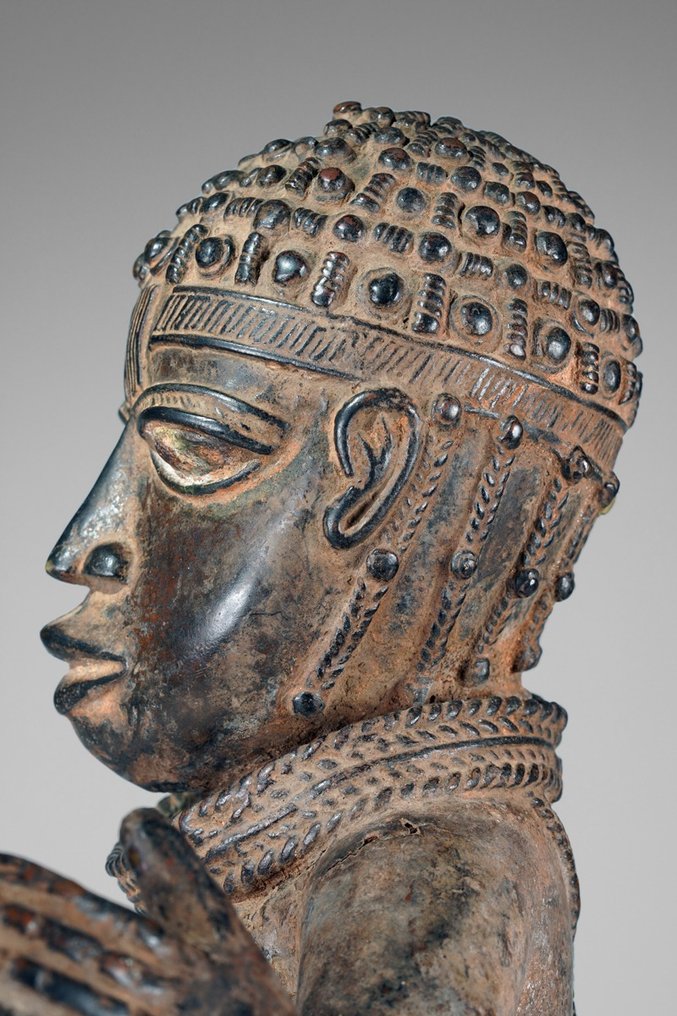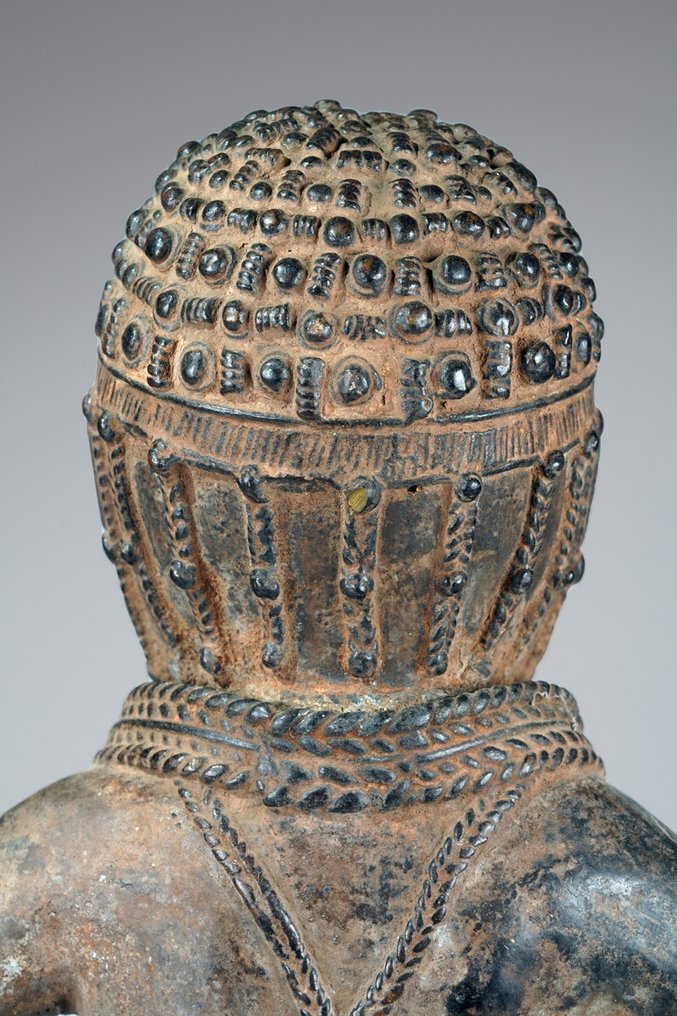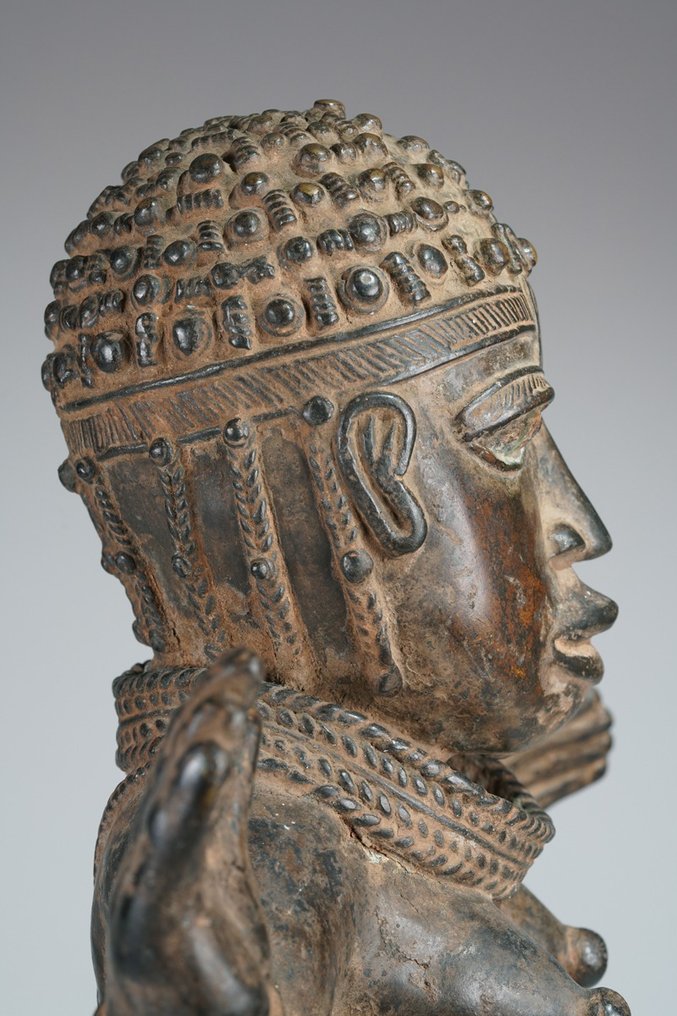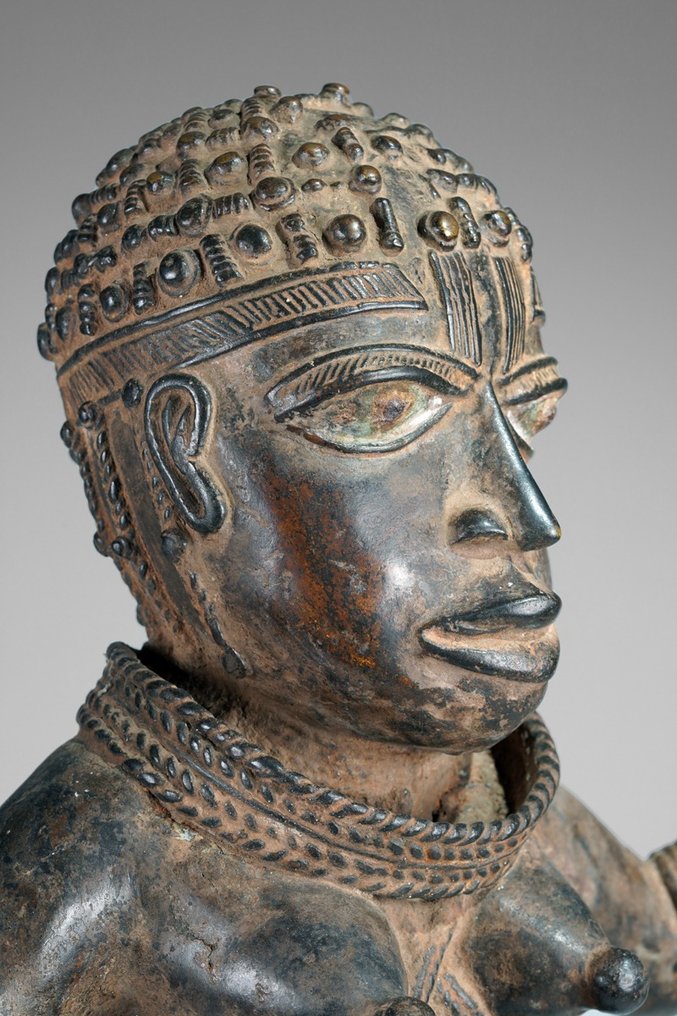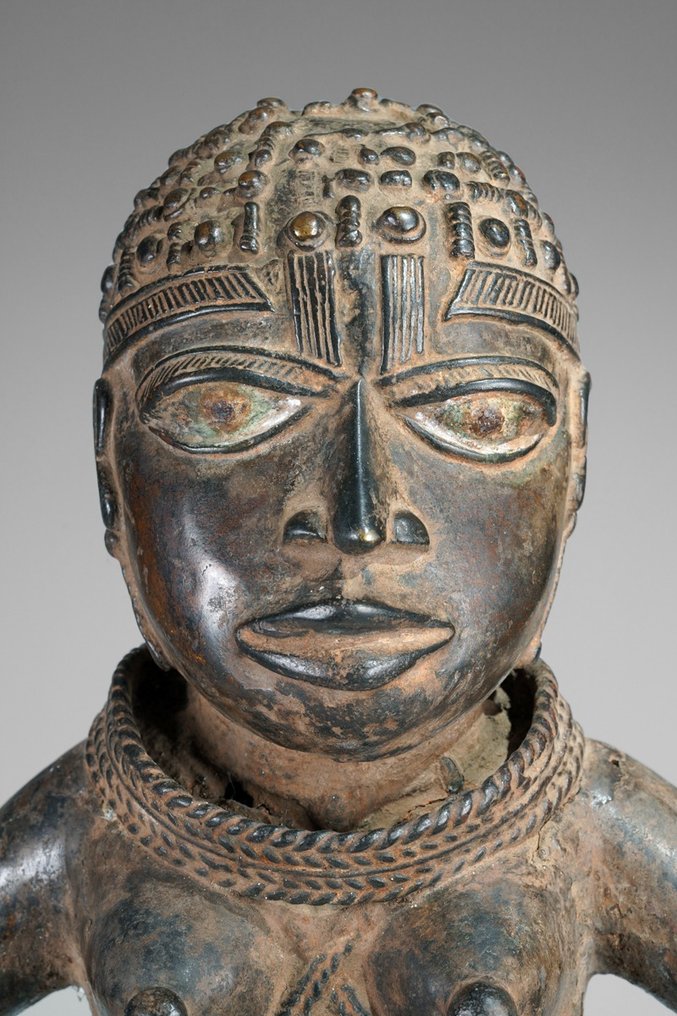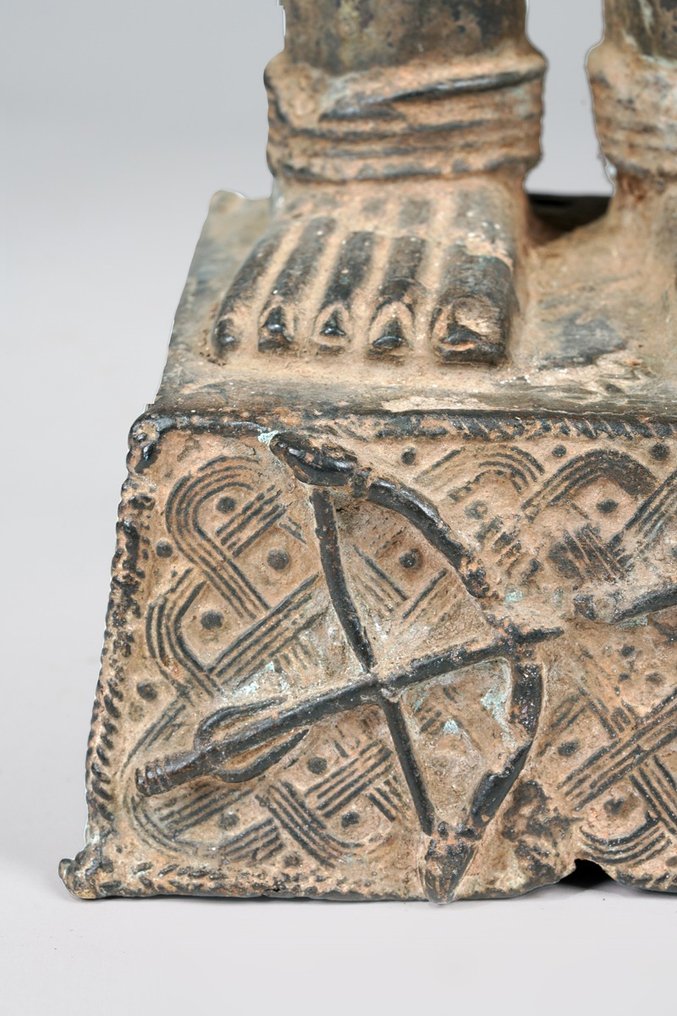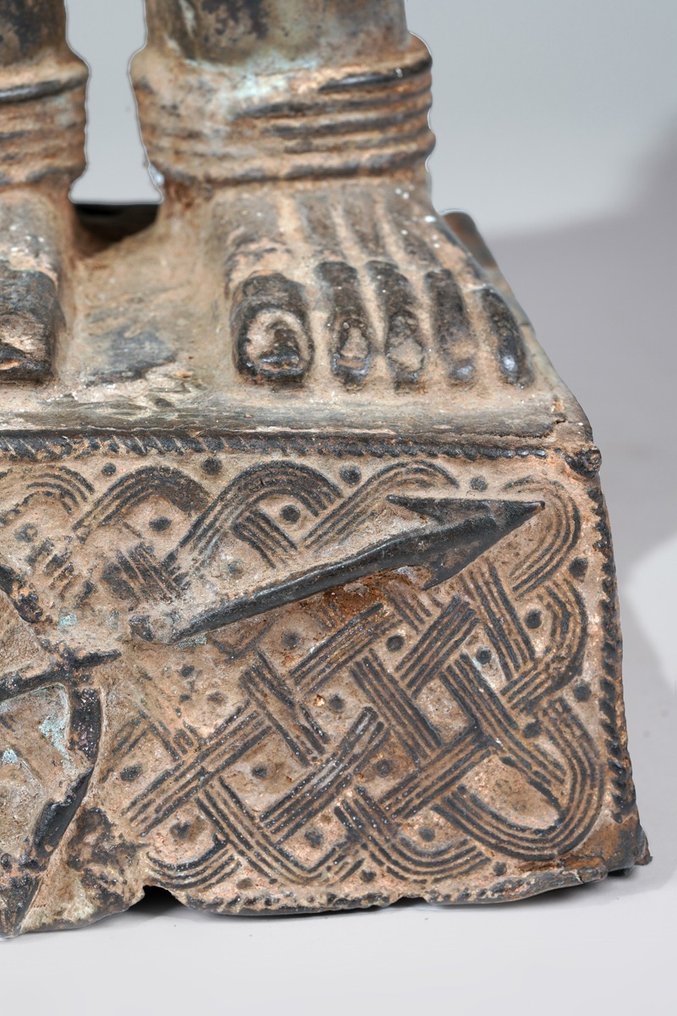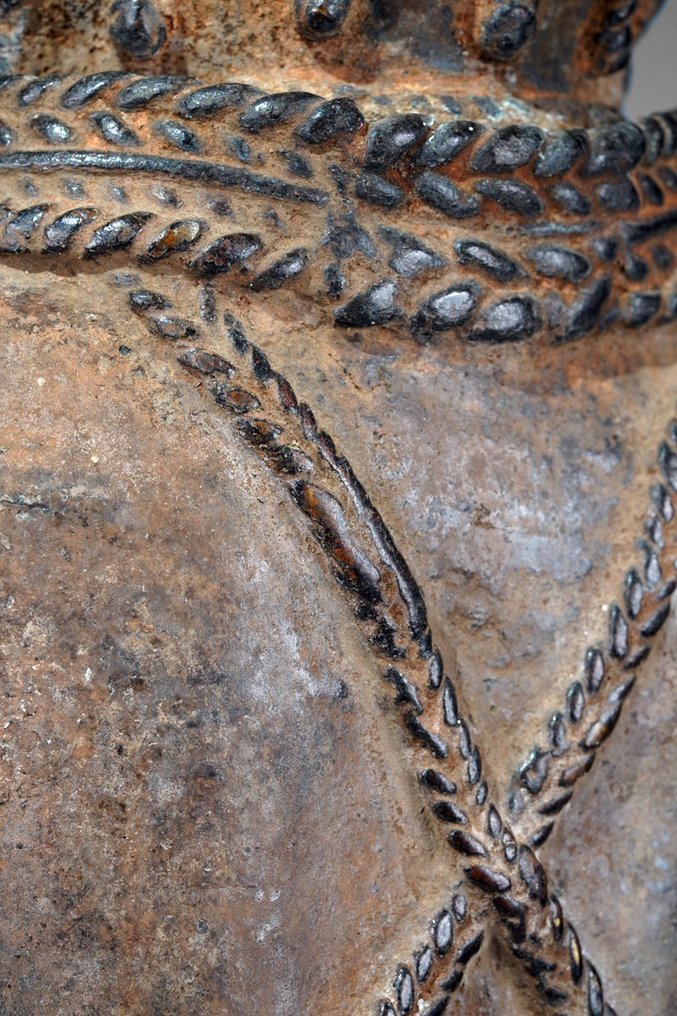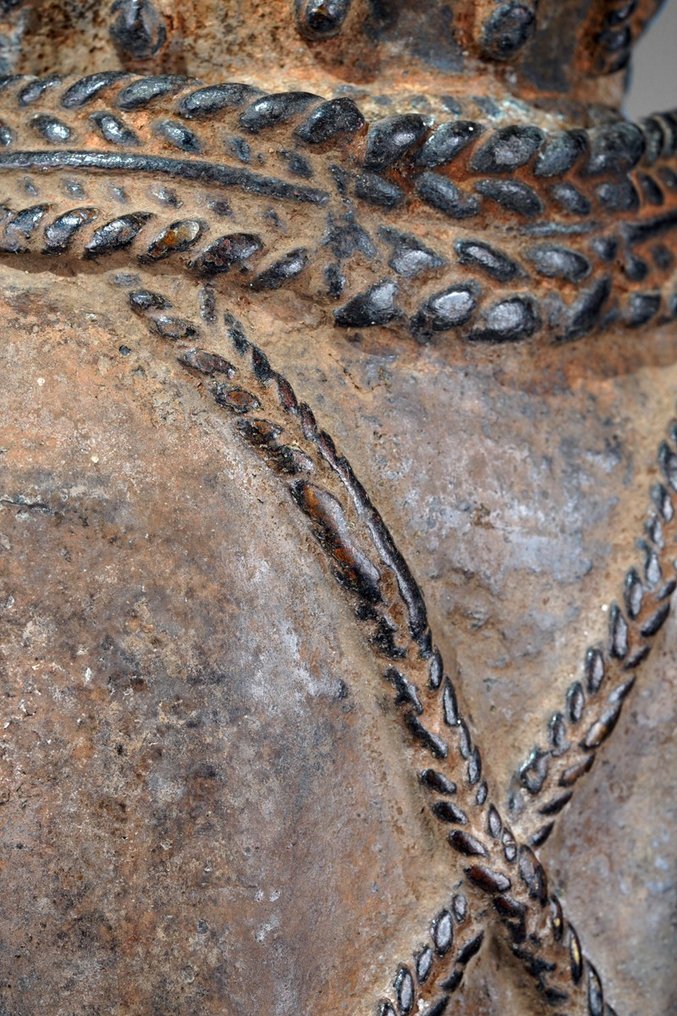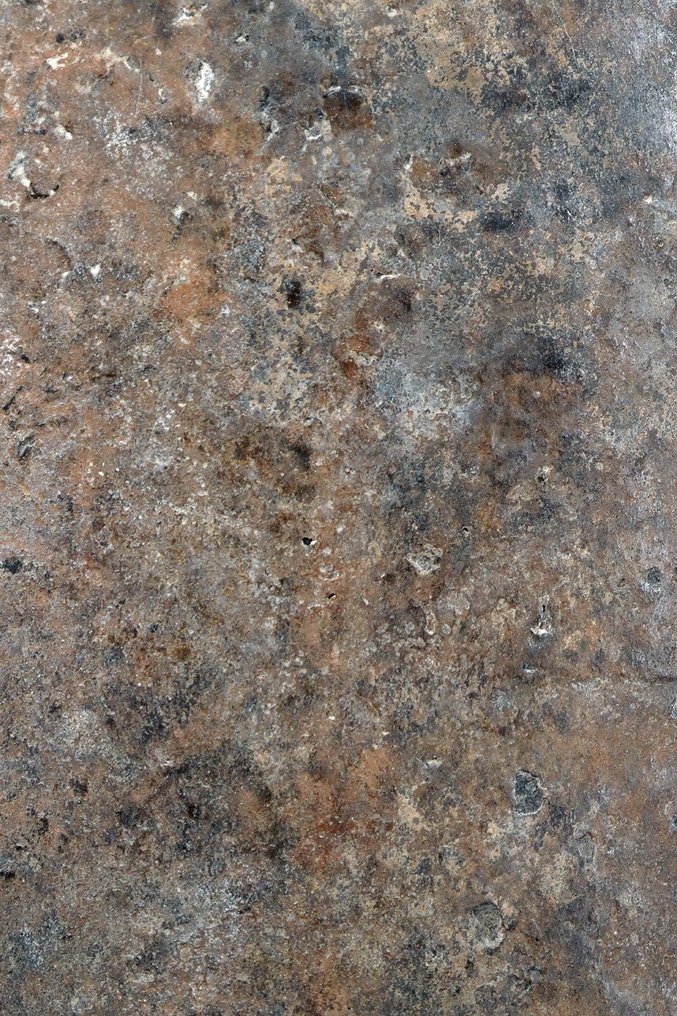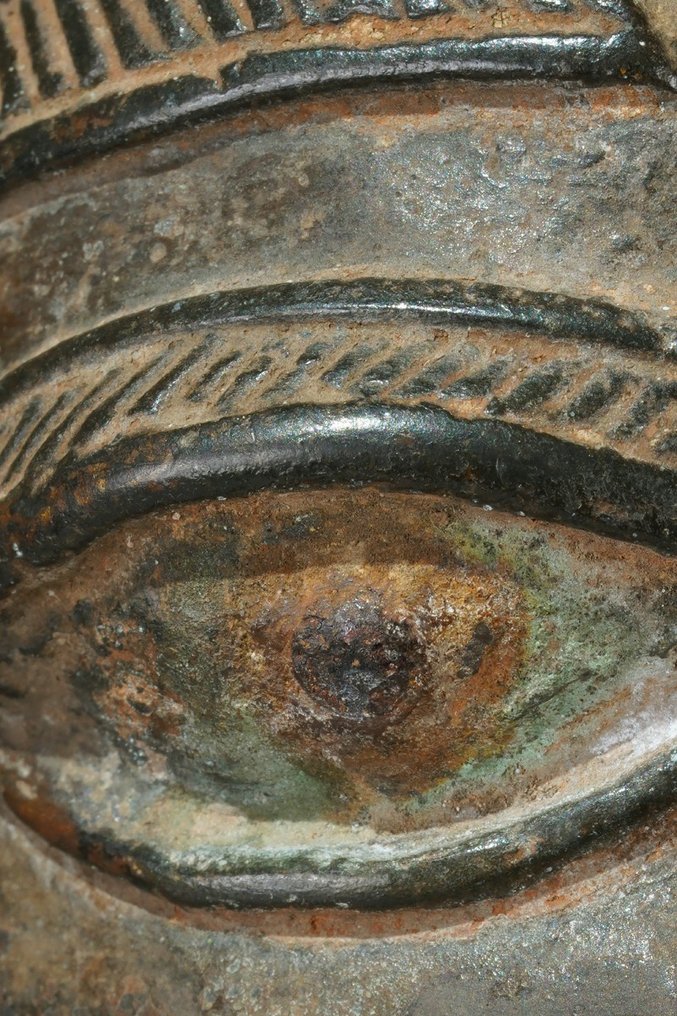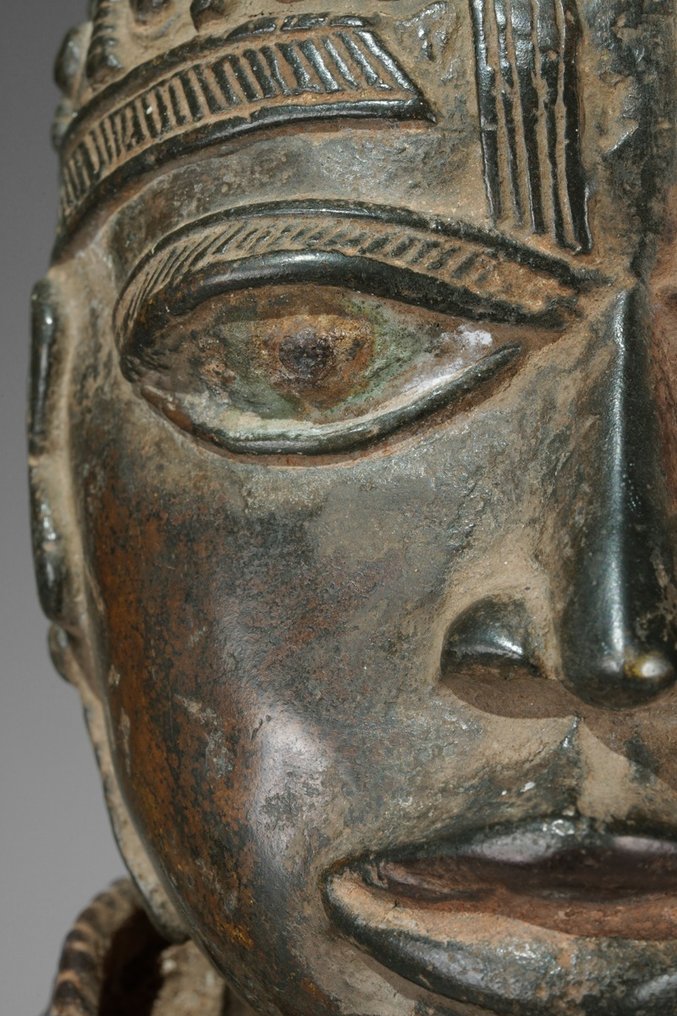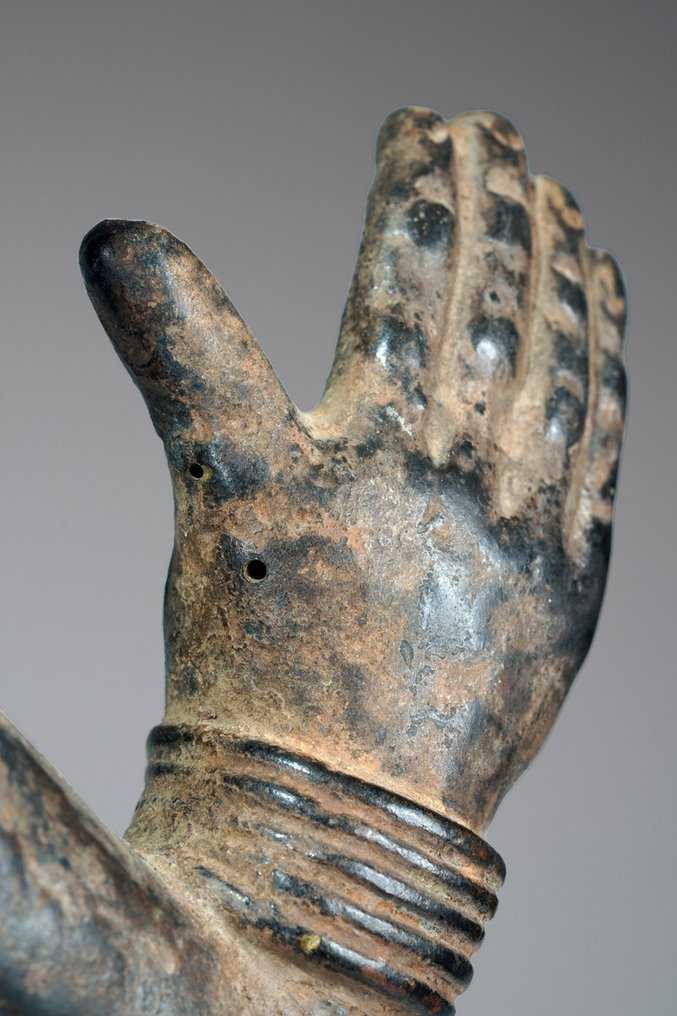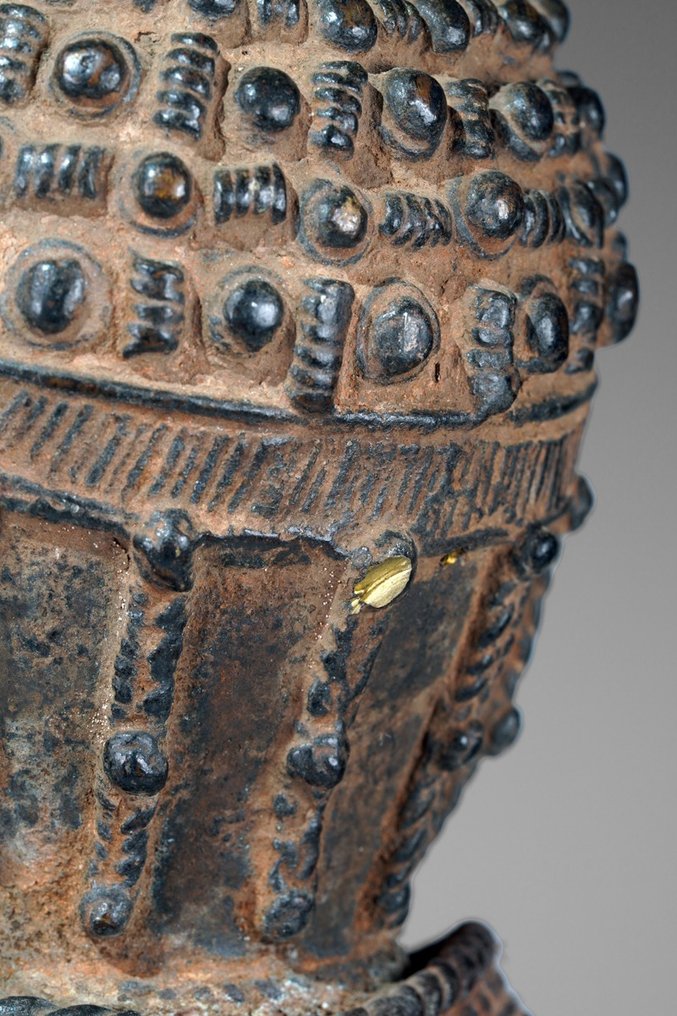wolfgang-jaenicke
A female Bronze sculpture, in the style of Benin
A female Bronze sculpture, in the style of Benin
Couldn't load pickup availability
A female Bronze sculpture, in the style of Benin, Nigeria, standing on a square plinth that is decorated with a bow and arrow, long flat feet, ankle bracelets, short legs, a necklace around the waist, a cylindrical body, a braided necklace around the neck crossing between her breasts, short arms rising towards the sky, the hands are upwards, open, she has a large rounded head composed of serene features, a closed mouth, pointed nose and two large eyes, her hair is short and composed of small lines and dots. This sculpture could be of the goddess Irhevbu or of Princess Edeleyo.
“Princess Edeleyo was the eldest daughter of Oba Ewuare and eldest sister to Prince Oduwa who later became Oba Olua. Edeleyo was the most famous Princess in Benin kingdom: she was very wealthy and popular among the people. The decision taken by the Uzama Nobles in 1473 A.D to crown her as Oba was unusual. This was because no woman had ever been chosen for the crown of the Benin kingdom. She became the first woman to be chosen for the position of Oba in Benin history. Although some historians have claimed that women had ruled as Ogiso during the first period of Benin Kingdom, it has already been stated that this assertion was a mistaken identity. Edeleyo was the closest woman to the throne of ancient Benin; she was the first and last woman to be made Ediaken (heir apparent) and was also prepared for coronation. However, this plan or arrangement was truncated by the nature of a woman” Source: Benin Kingdom, the unusual choice of Princess Edeleyo, 2020
"A number of large standing figures are known from Benin, representing the Oba, attendants and European soldiers. Female figures of brass are comparatively scarce. That from Berlin (cat. 5.60h) immediately challenges notions of a classical Benin men corpus. A closely similar one (in the Lagos collection) has a stand in a form normal in Benin works dated to the late 17th century. In common with many of the plaques, the arms are cast solid, without clay core. The neck-lace, crossed baldric, facial and body scarification are features all well known from classic Benin works but hows the style here is greatly at variance with these. The bulbous eyes and tubular legs, the extraordinary modelling of the hair and the square feet all recall a vast and heterogeneous corpus of southern Nigerian bronze castings that have not been assigned to any particular centre and are reduced to a spurious order by calling them the Lower Niger Bronze Industry. Attempts to identify the casting with figures of Benin myth and history remain speculative. Meanwhile, "Benin' continues to spawn an in- increasingly numerous and dubious okun. progeny Owo, Ijebu etc. derived from vassal cities of the Benin empire as a means of explaining its substyles in terms of outside evidence." Source Tom Phillips, Africa, the art of the continent, p.399.
